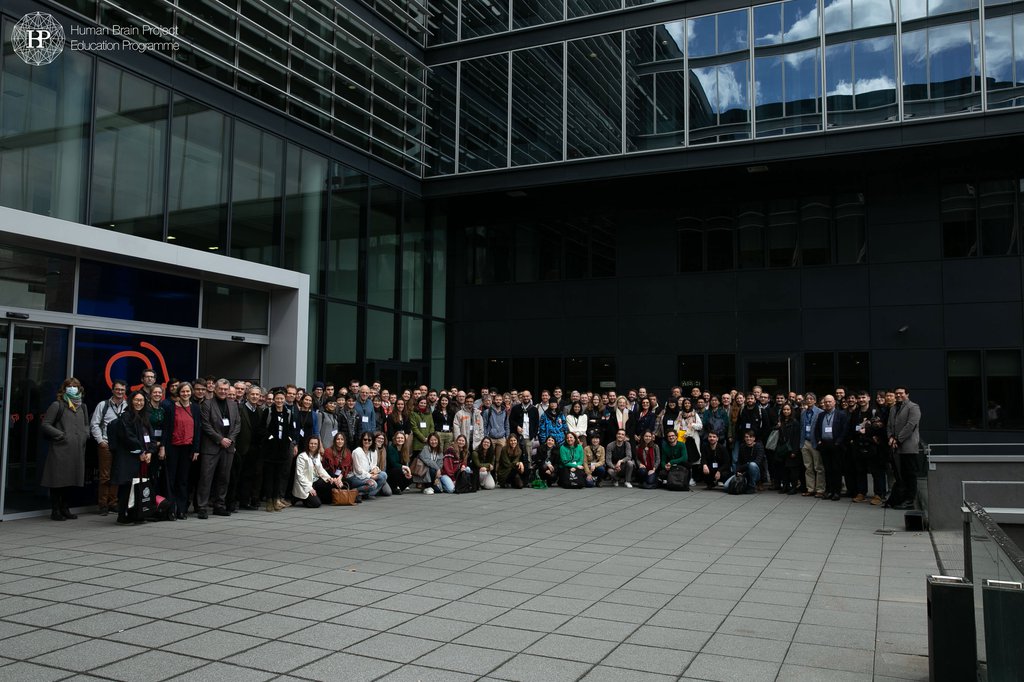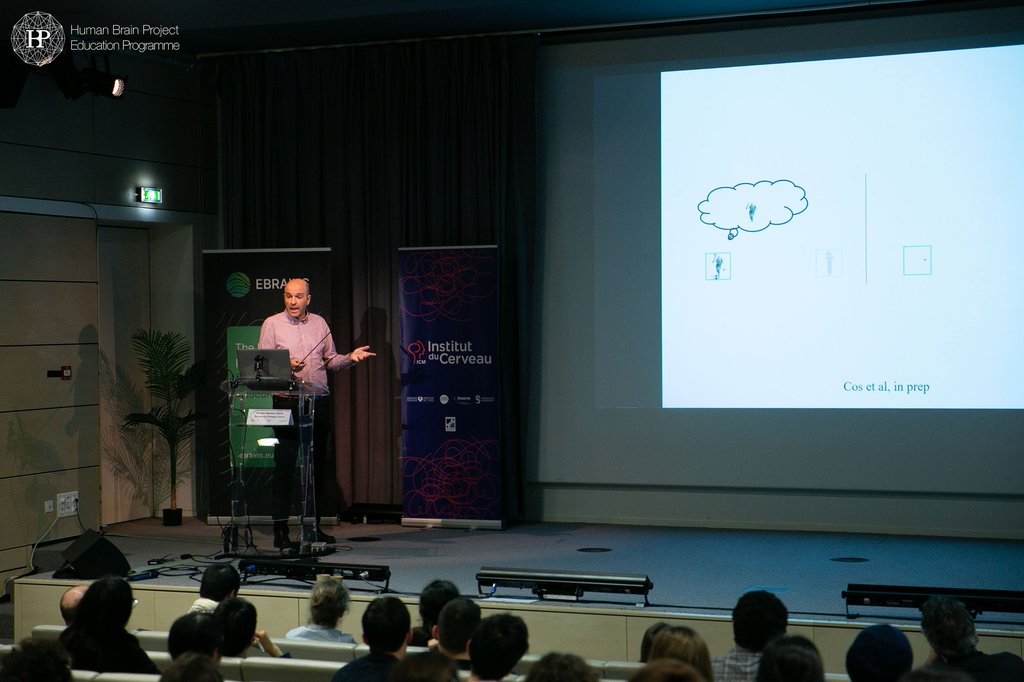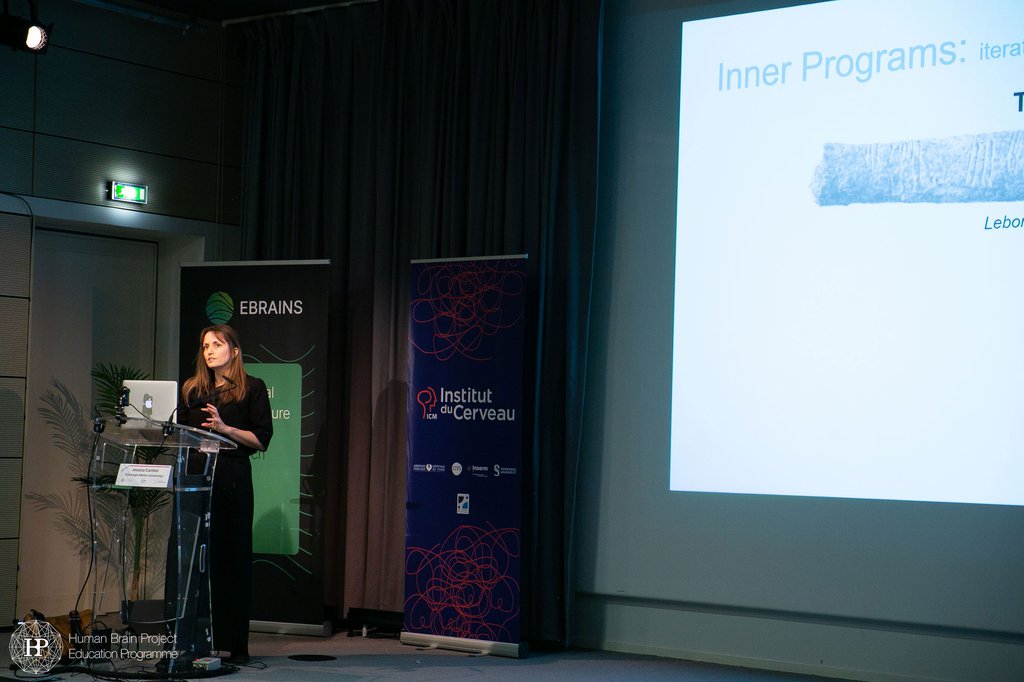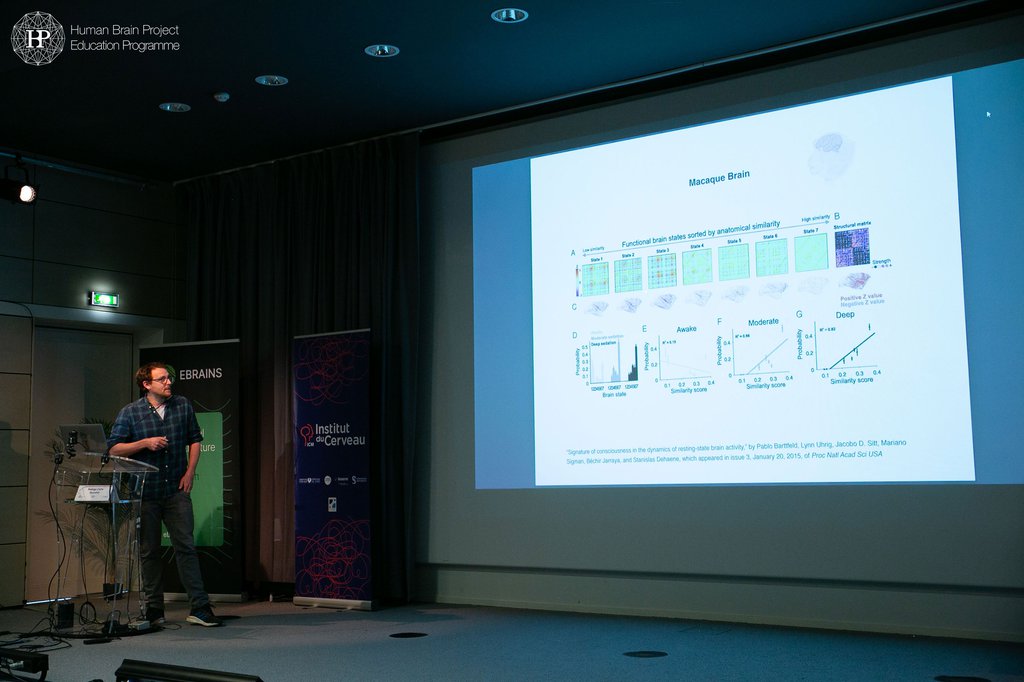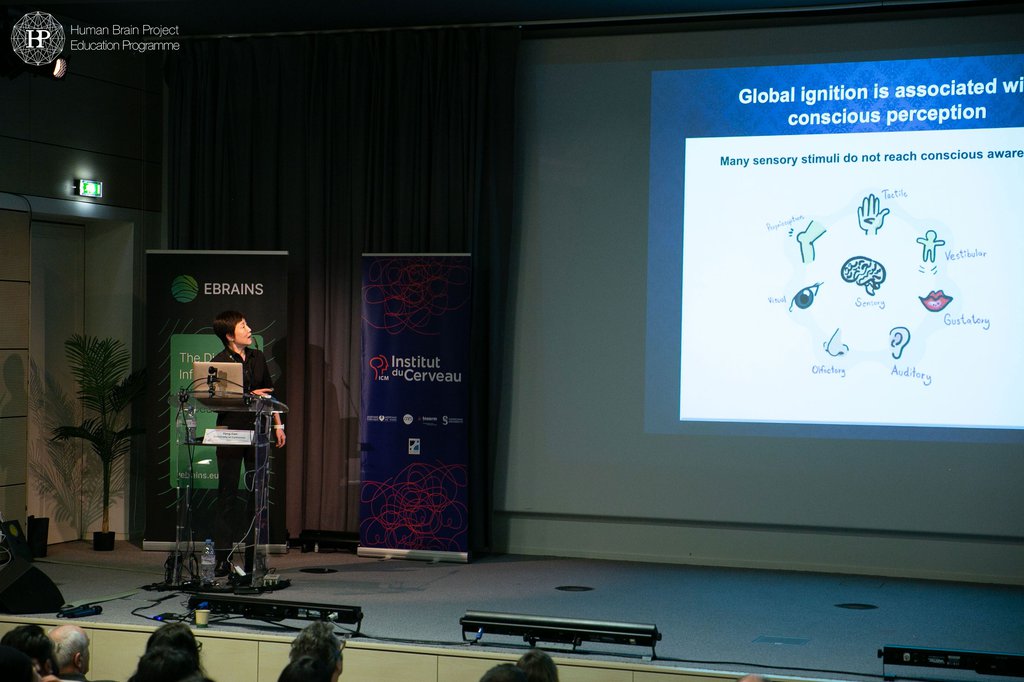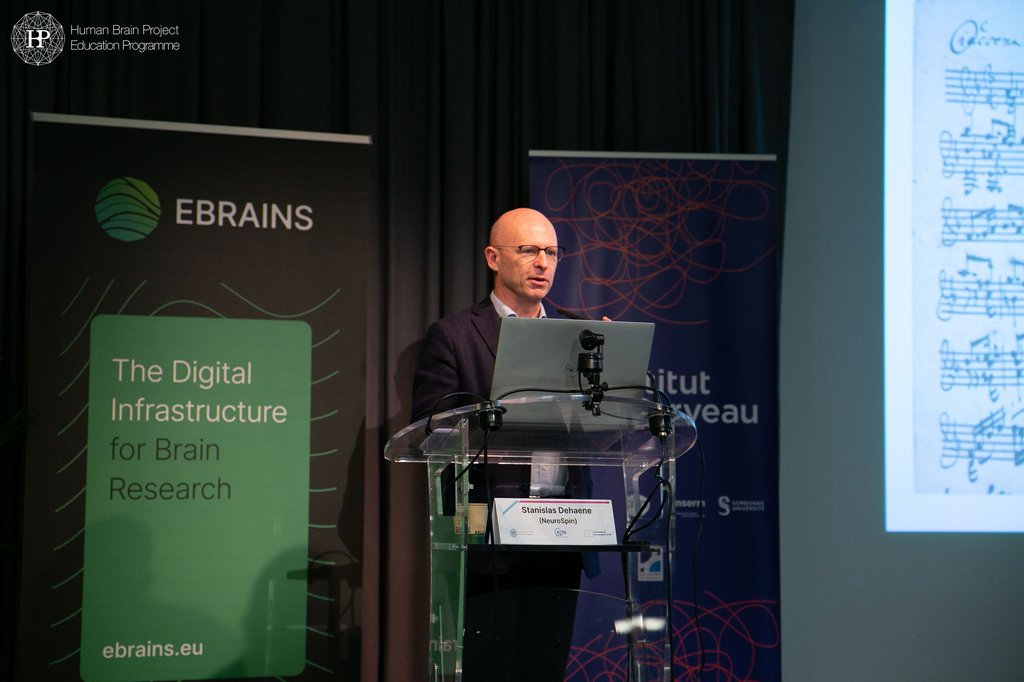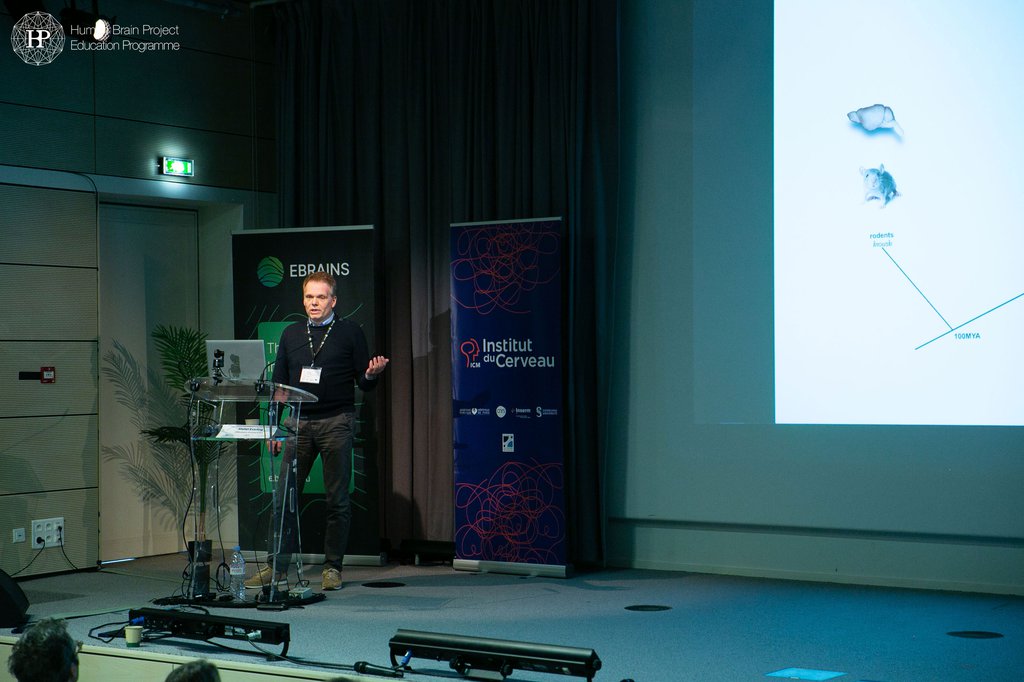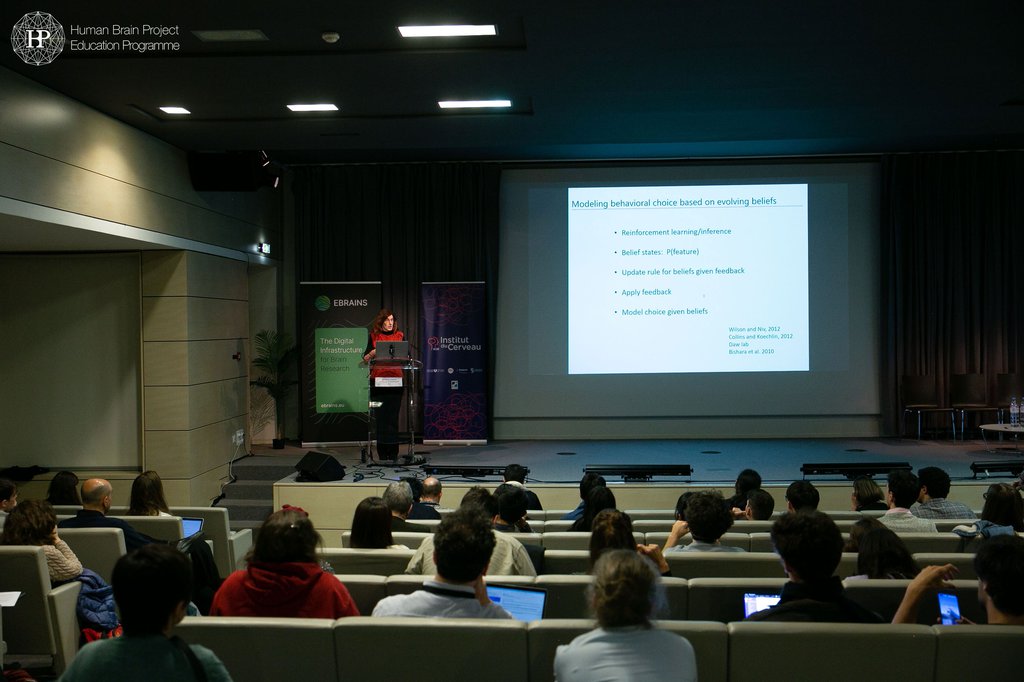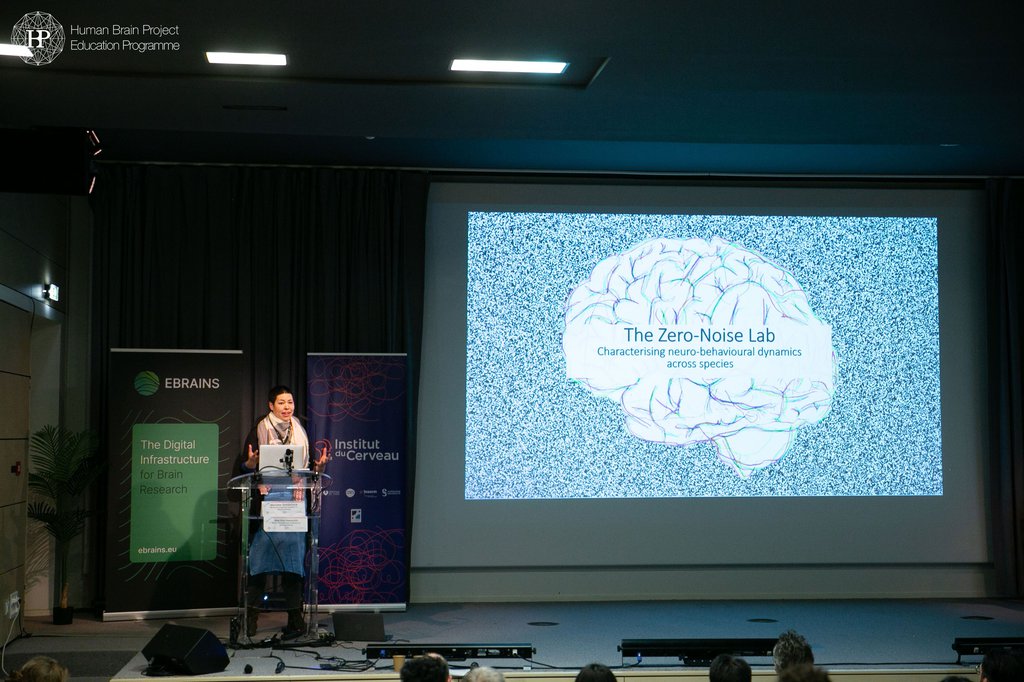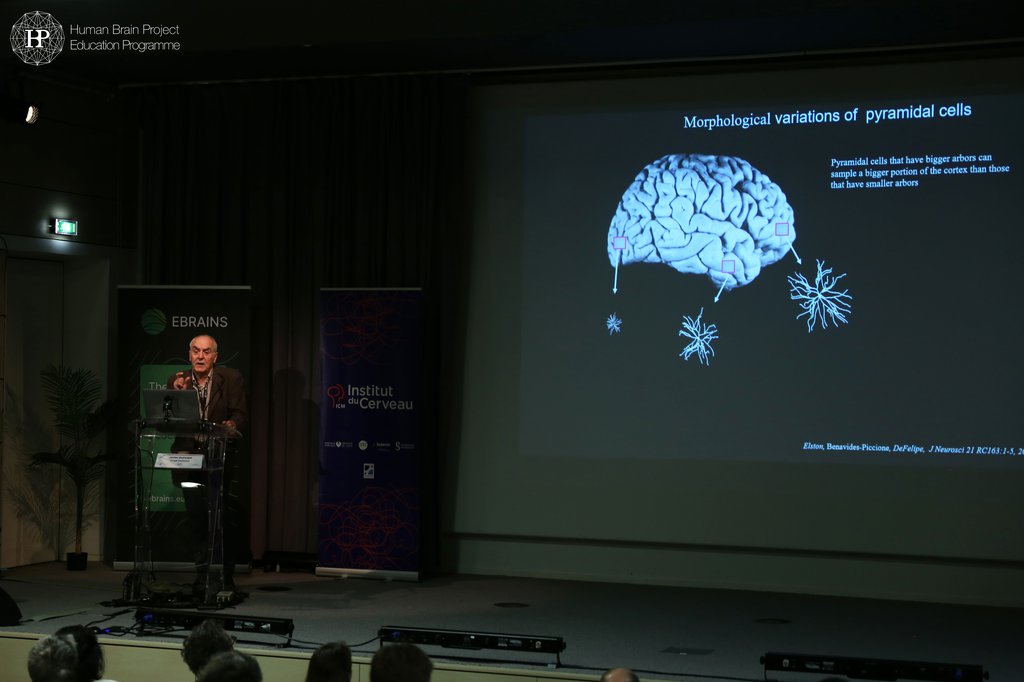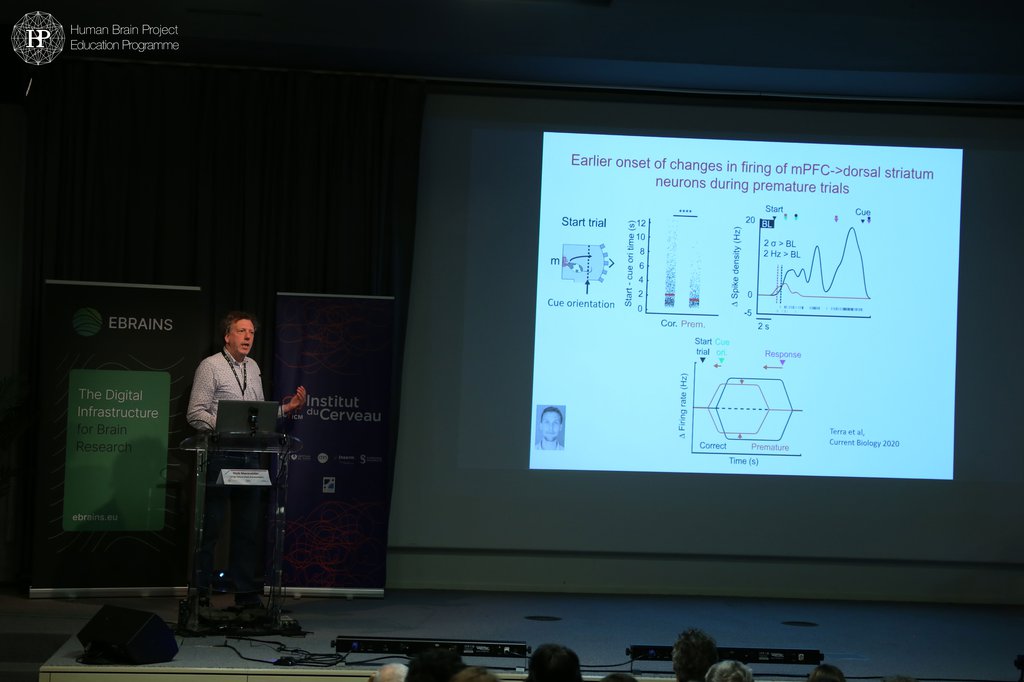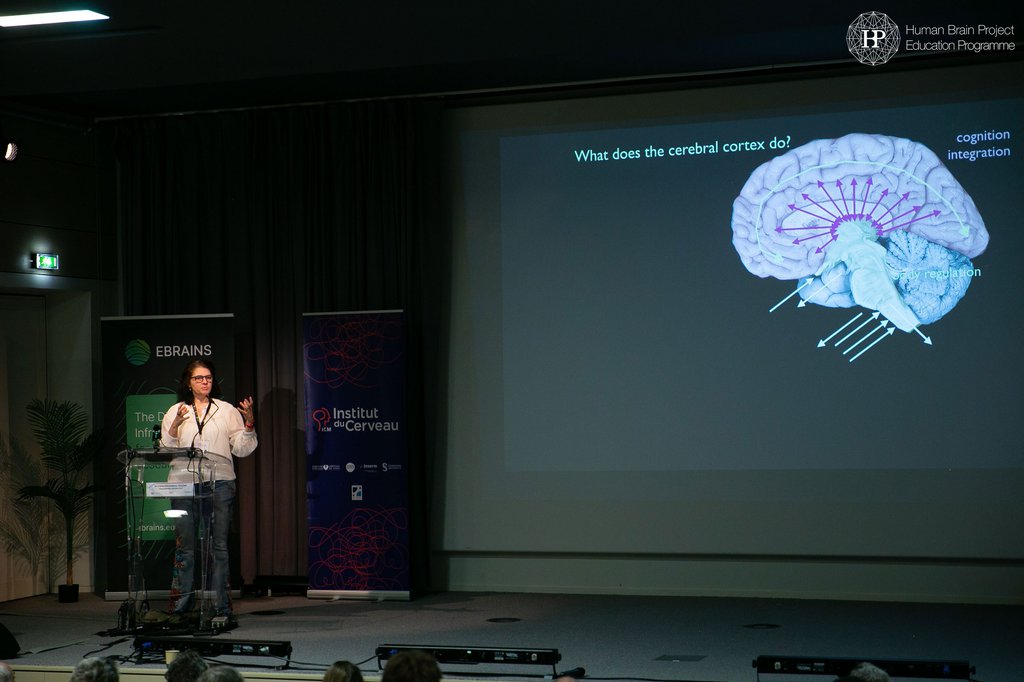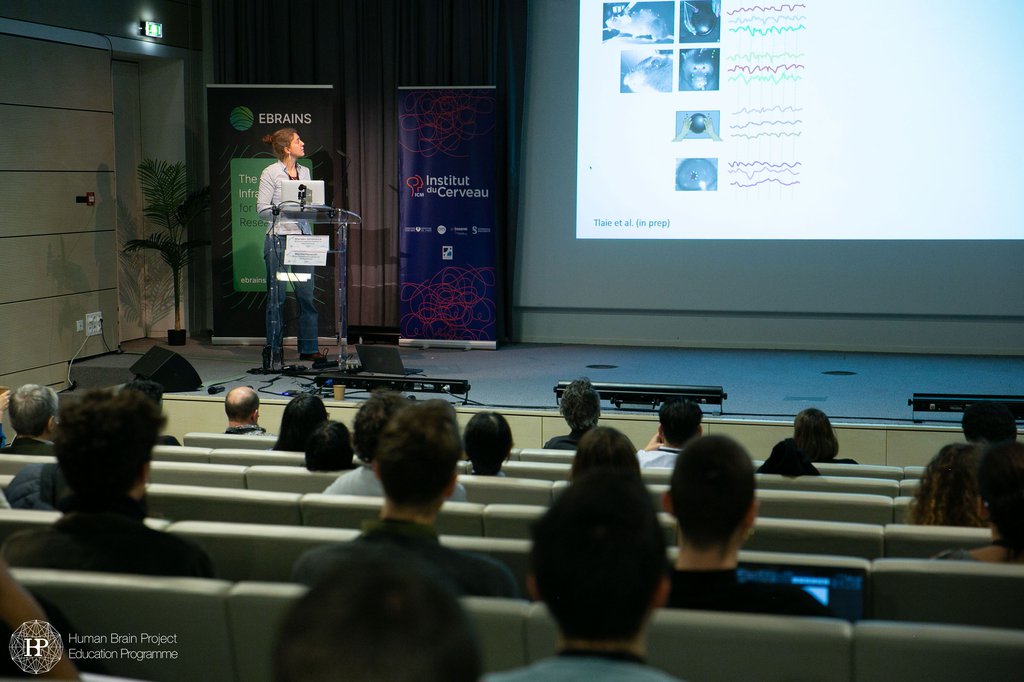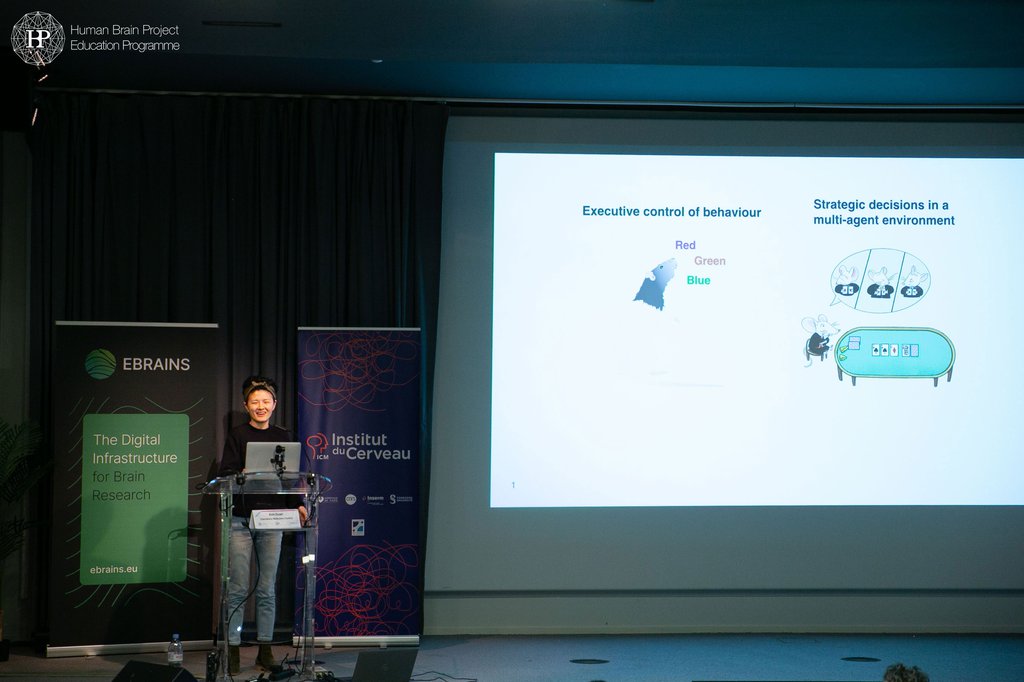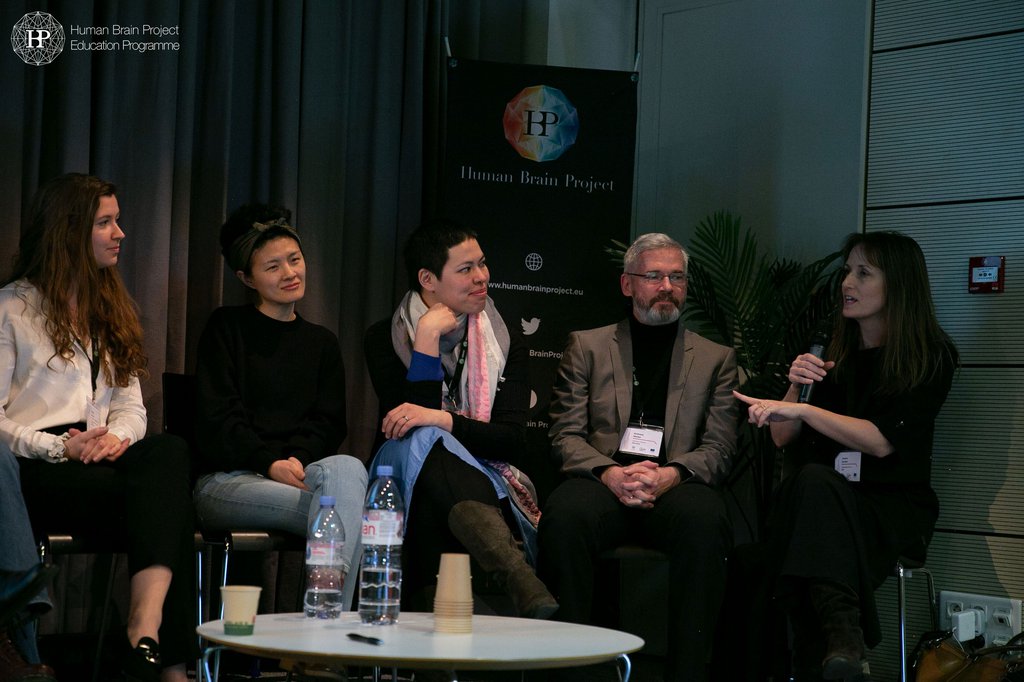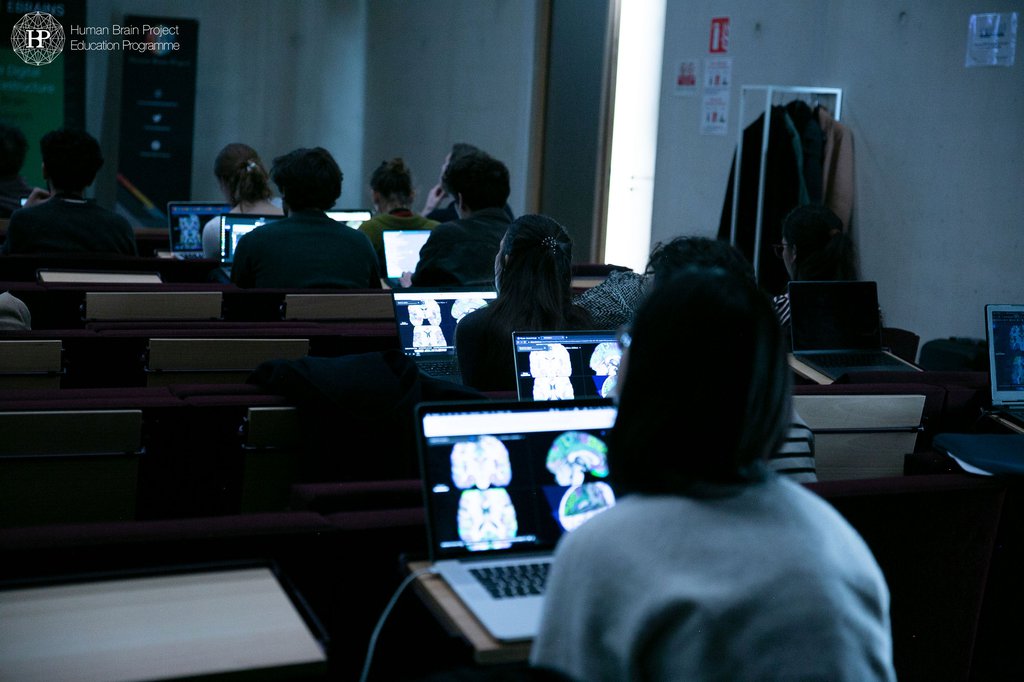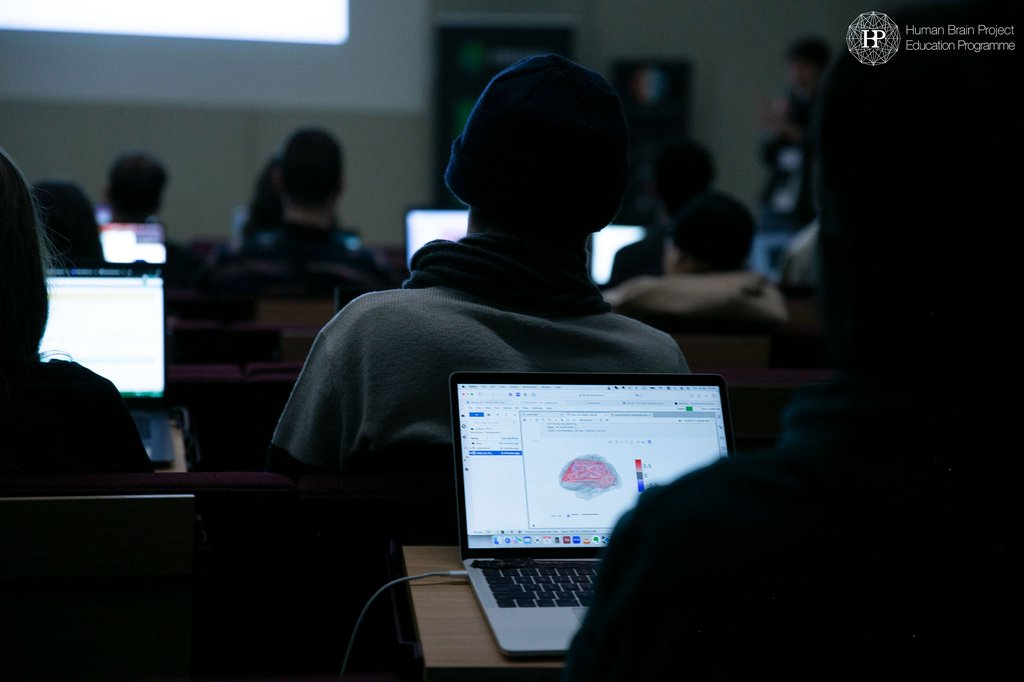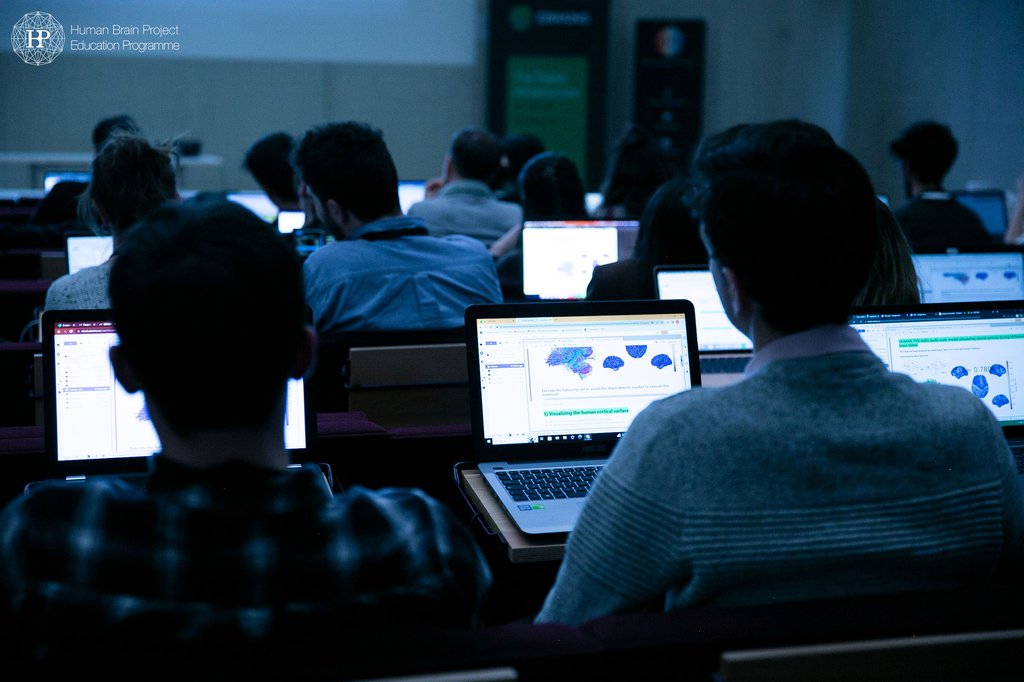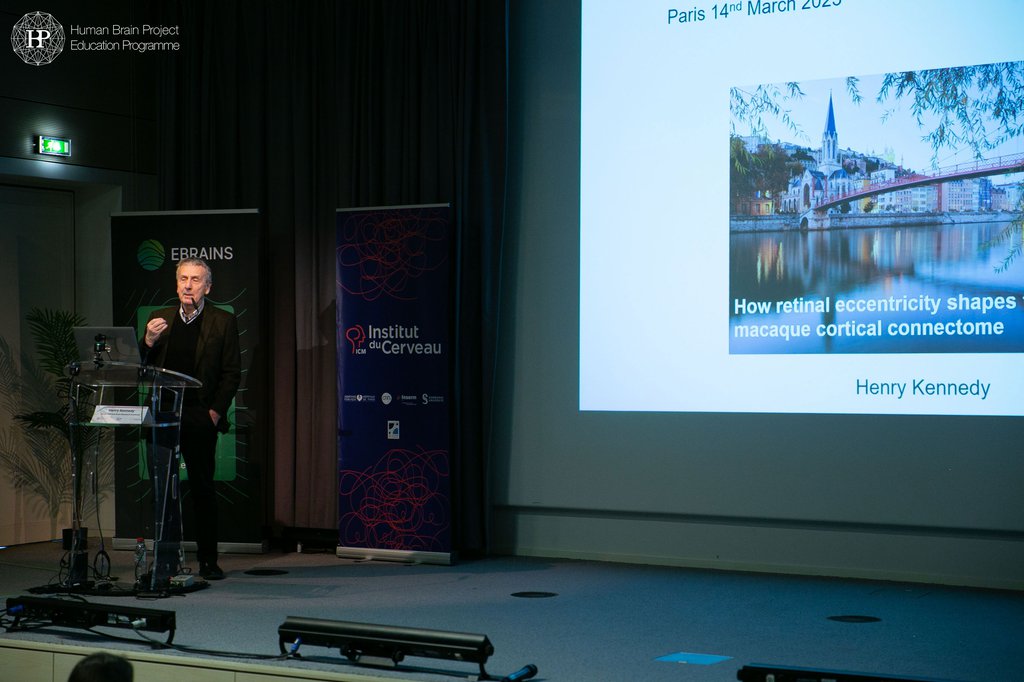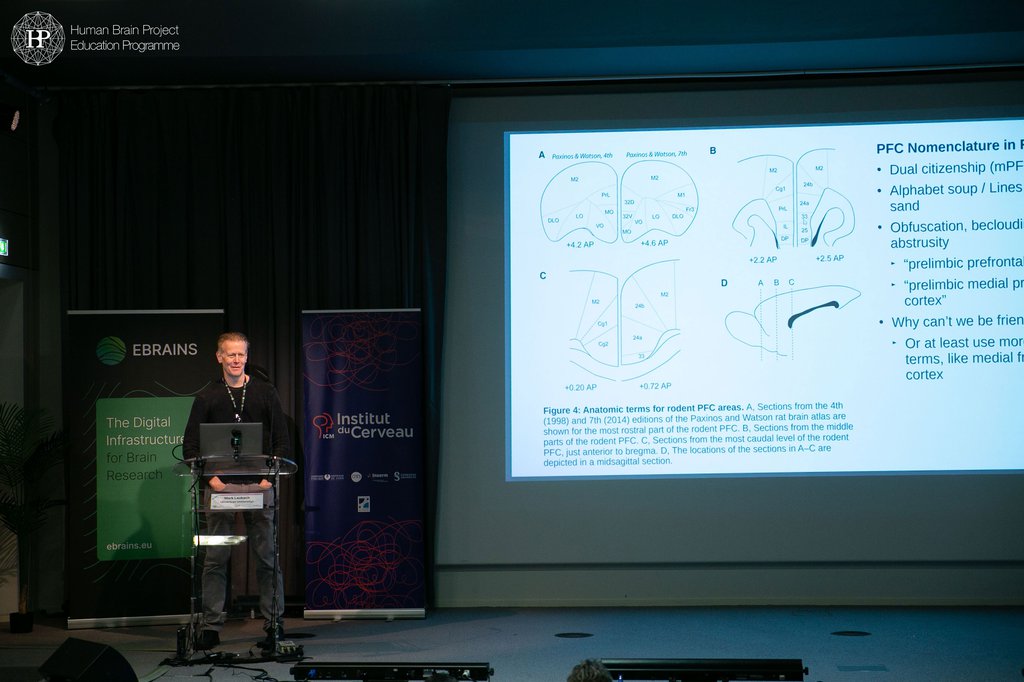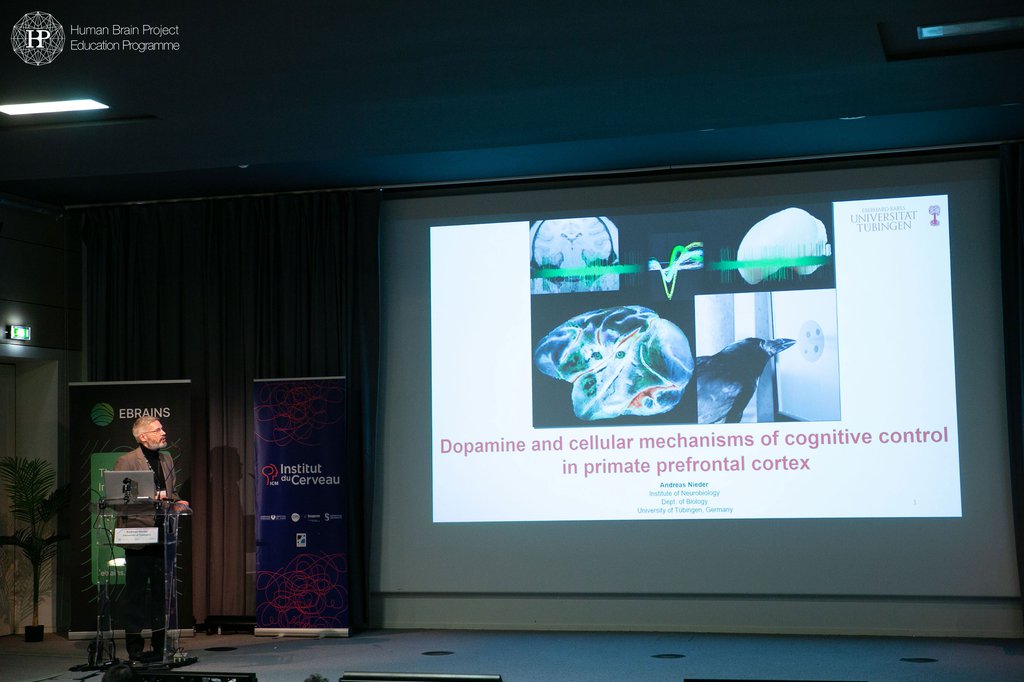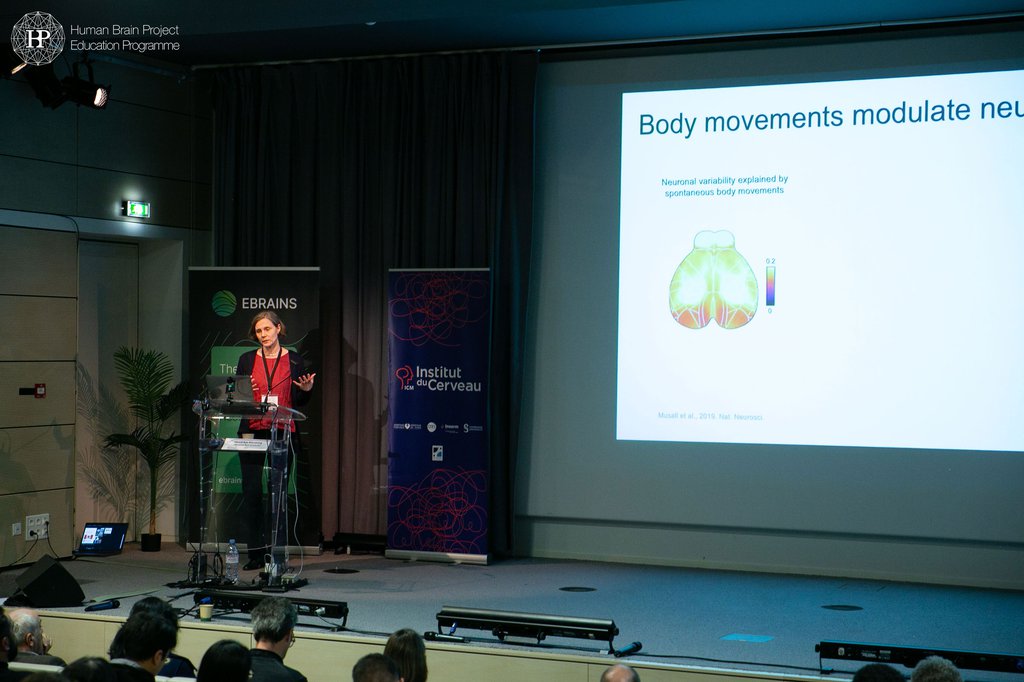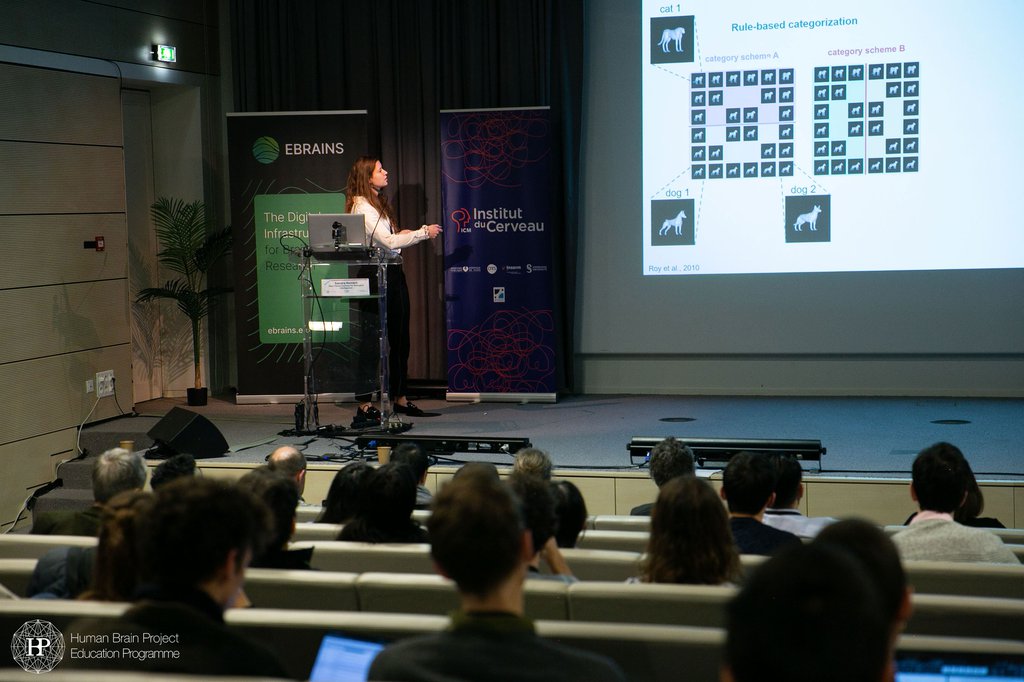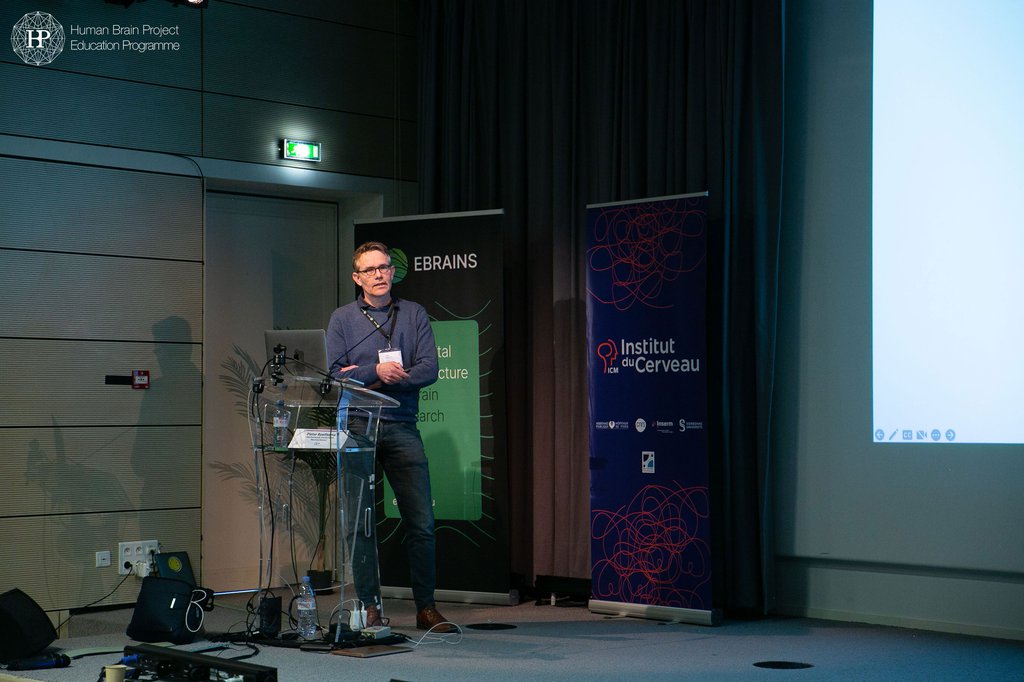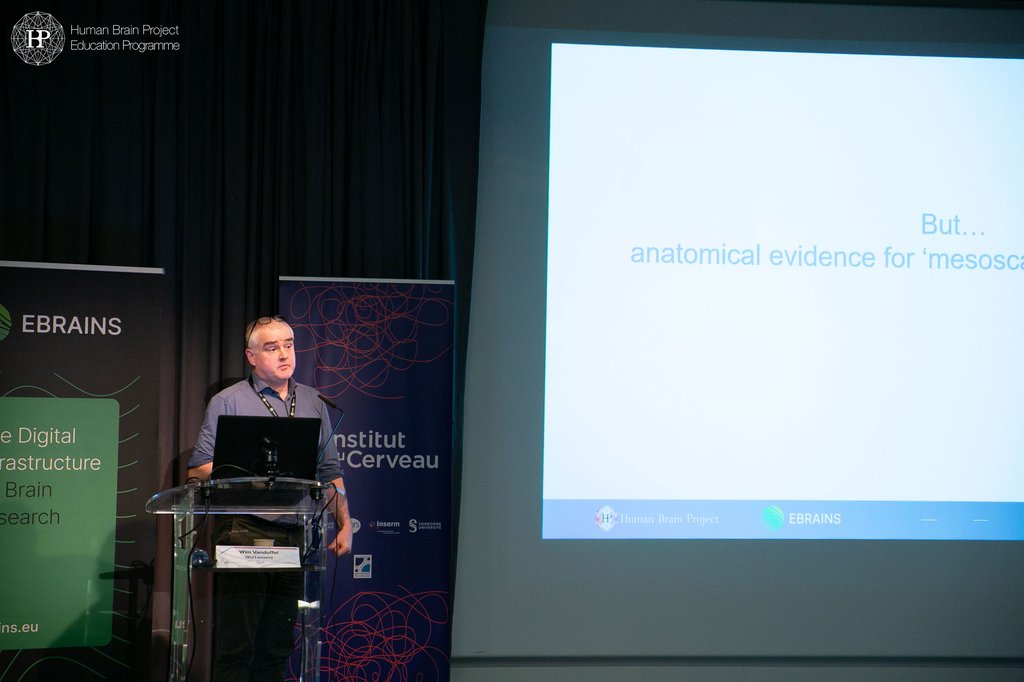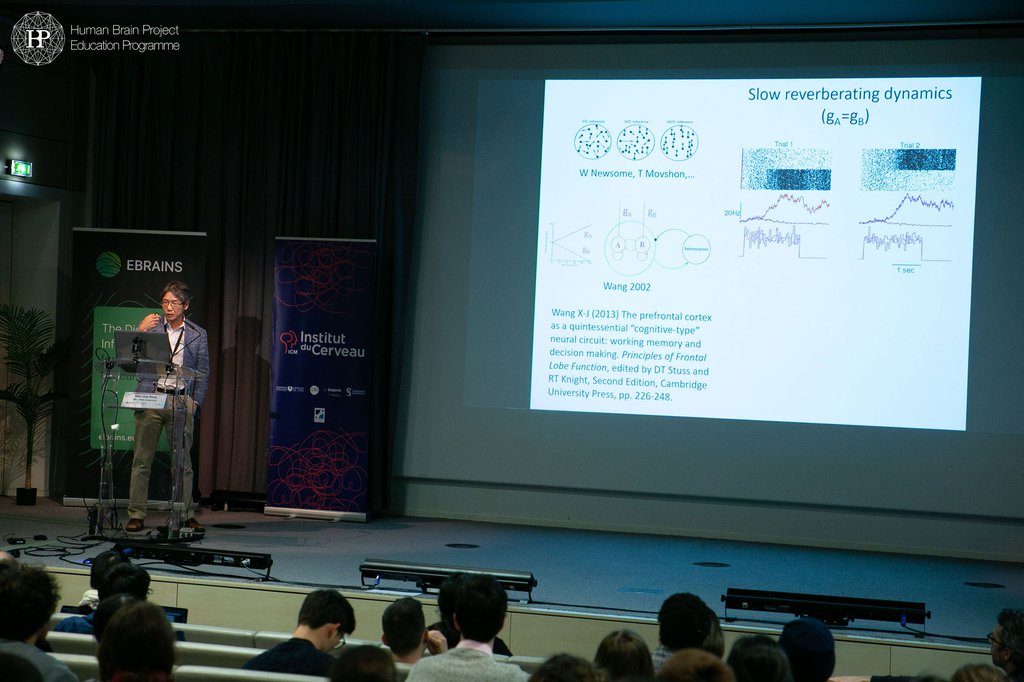EBRAINS Workshop
Anatomy and function of the prefrontal cortex across species
14 – 16 March 2023 | Paris, France
Download the Announcement Flyer 478.0 KB | Download the Scientific Programme 661.1 KB | Recorded lectures
About
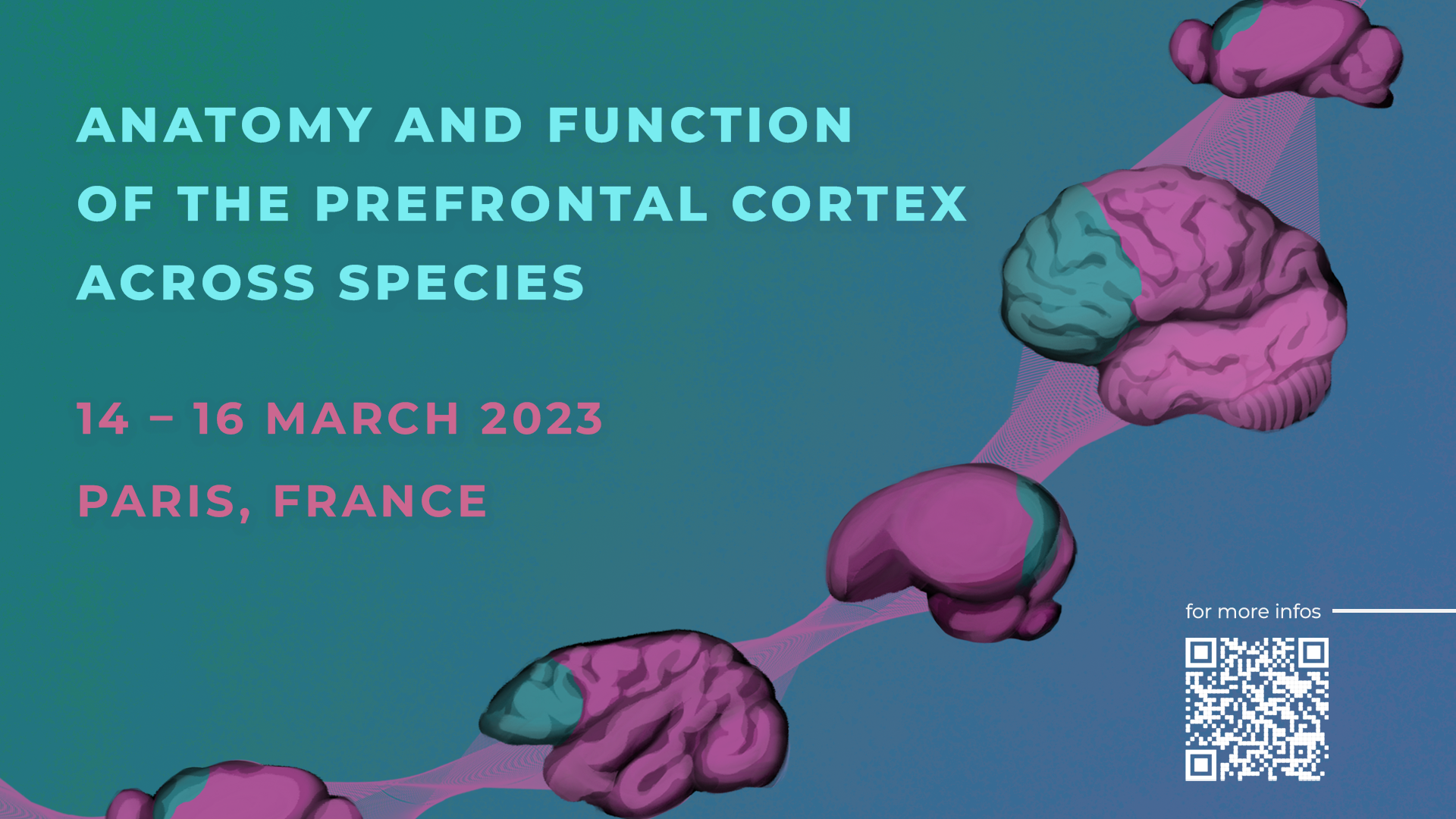
By plane
Paris has three major airports used for international flights: Paris Charles de Gaulle Airport, Pairs Orly Airport (both are located about 10 km away from Paris) and Paris Beauvais Airport (about 60 km away from Paris and mainly used cheap airlines). All airports are well connected with Paris via public transportation.
By car
Paris is well connected with other European cities via highways. French highways are tolled. Toll costs depend on the highway, the distance travelled and the type of vehicle.
Please note that Paris is a limited traffic zone. In case of high pollution levels, vehicles are banned from driving. In order to display the pollution level of your car, you need a Crit'Air sticker.
French speed limits are as follows:
Motorways: 130 km/h
Dual Carriageways: 110 km/h
Main Roads Outside Built-up Areas: 80 km/h
Main Roads Within Built-up Areas: 50 km/h
By train
Paris has seven major train stations, which connects the city with France as well as many major European cities:
- Gare du Nord (Connections to London, the Netherlands, Belgium, Germany, Switzerland and France)
- Gare Saint-Lazare (Connections to the Northwest of France)
- Gare de l'Est (Connections to the East of France, Luxembourg, Germany and Poland)
- Gare de Lyon (Connections to the South fo France, Southern Germany, Monaco, Switzerland, Italy and Spain)
- Gare d'Austerlitz (Connections to Central and Southern France)
- Gare de Montparnasse (Connections to West and Southwest France)
- Gare de Bercy (Major hub for coaches coming from the rest of Europe)
Tickets can be bought on the websites of SNCF, which is the main train company operating in France. Other train companies are Thalys and Eurostar.
By bus
Paris can also be reached by coaches, which is probably the cheapest option. The major coach services are BlaBlaBus and Flixbus.
The University Hospitals Pitié Salpêtrière - Charles Foix is easily reachable by public transportation:
Via Metro: Line 5 (Stop: Sain Marcel) or Line 10 (Stop: Gare d'Austerlitz)
Via Bus: Line 91 or line 10 (Stop: Saint-Marcel)
Via RER C and SNCF: Station Gare d'Austerlitz
Since 14 March 2022, the “vaccine pass” has been lifted in France in all areas where it was previously required (cultural and leisure venues, commercial catering, professional trade shows, etc.). Similarly, the COVID certificate is no longer required as of 1 August 2022.
Please check this website to read the most recent regulations in France.
Paris has an oceanic climate typical of Western Europe. The climate is mild and moderately wet.
The daily temperature in March are between 8 and 12°C.
The following hotels are in close proximity to the venue:
- Kyriad Hotel XIII Italie Gobelins
- ibis Paris Avenue d'Italie 13ème
- Hotel Le Richemont
- Hôtel des Ecrivains
- Hôtel de la Place des Alpes
- Hotel Orphée
- Hôtel Libertel Austerlitz Jardin des Plantes
- Ibis Styles Paris Tolbiac Bibliothèque de France
- Jack's Hotel
- La Manufacture Hotel
- Hôtel Urban Bivouac
- Le Vert Galant
Language
The native language of France is French.
Currency
The currency of France is Euro. 1€ is made up of 100 cents. Money can be exchanged in exchange bureaux and some banks. In order to exchange money, you usually need to present an ID. ATMs are available 24 hours a day.
Time
France belongs to the Central European Standard Time zone. They have summer and winter time. Summertime starts in March when clocks are set 1 hour forward and lasts until October.
Electricity
The norm is 220 volts with a frequency of 50 Hz. The used plug types are C and E.
Please note that the information provided on this site has been obtained from several different sources and therefore the organisers cannot accept any responsibility for errors therein.
Understanding the human brain relies for a large part on work in animal models, which necessitates a careful cross-species comparison. The prefrontal cortex (PFC) is particularly relevant in this regard as its function is poorly understood and potential cross-species differences remain highly debated. This workshop brought together experimental and computational scientists whose work allows a comparison of the anatomy and function of the PFC between species (in particular between humans, monkeys and mice).
EBRAINS is uniquely suited to provide a platform to compare anatomy, physiology and behaviour between species, due to its atlases, numerous datasets, as well as the whole brain models from different species. The interactive format of the workshop allowed speakers as well as participants from largely separated fields to interact and discuss, which is expected to create novel insights as well as lead to more coherence and clarity in the relevant terminology, formats and important research directions in the field.
Registration
Registration is closed.
Registration fees in EUR
| Early Bird Registration Fee | Late Registration Fee | |
| Students* | 75.00 € | 100.00 € |
| Regular Participants | 150.00 € | 200.00 € |
* A proof of your student status (student ID) will be required on site, otherwise a surcharge (regular participant fee) has to be paid.
What is included in the registration fee?
- Admission to all scientific sessions
- Admission to all parallel sessions
- Meeting material
- Coffee & lunch breaks during the conference
- Dinners on Monday 5 September and Tuesday 6 September
The fee does not include travel and accommodation.
Waiting list
Waiting list candidates will be informed about their status of attendance at the latest by 1 March.
Fee waivers
Application deadline for the fee waivers has passed. Fee waiver winners will be informed on 2 December.
Payment modalities
Payment of registration fees can be made in EURO in the form of
- Credit or debit card
- PayPal
Confirmation of registration
After the registration has been completed you will receive an automatically generated notification via email. If you need an invoice, please contact workshop.edu@humanbrainproject.eu
Cancellations and refunds
Notice of cancellation has to be made in writing via email to the HBP Education Programme Office to: workshop.edu@humanbrainproject.eu.
The policy for refunding registration fees is as follows:
Written cancellation received:
before 5 December 2022: 100% refund
before 1 January 2023: 80% refund
before 31 January 2023: 50% refund
from 1 February 2023: no refund
No refunds will be granted for unattended events or early termination of attendance, in case of cancellation of speakers, lack of space in the conference room, or any other incidents during the conference that are beyond the control of the conference organisers.
Letter of invitation
Individuals requiring an official letter of invitation from the event organisers can request one by contacting the organisers, by email to: workshop.edu@humanbrainproject.eu. To receive a letter of invitation, delegates must register for the event first and submit any necessary data, as stated in the online form. The letter of invitation does not financially obligate the conference organisers in any way. All expenses incurred in relation to the event, the registration, and the attendance are the sole responsibility of the delegate.
Modification of the programme
The event organisers reserve the right to modify the programme. No refunds can be granted in case of cancellation of speakers, lack of space in the conference room, or any other incidents during the conference that are beyond the control of the conference organisers.
Cancellation of the event
In the case that the event cannot be held or is postponed due to events beyond the control of the conference organisers (force majeure) or due to events that are not attributable to wrongful intent or gross negligence of the event organisers, the event organisers cannot be held liable by delegates for any damages, costs, or losses incurred, such as transportation costs, accommodation costs, costs for additional orders, financial losses, etc.
Picture Gallery
Programme
Times displayed are in CET/GMT+1/UTC+1.
Download the Scientific Programme 661.1 KB
|
|
Registration & Coffee |
|
|
|
|
9:05 – 10:45 |
Session Anatomy I |
|
10:45 – 11:15 |
Coffee Break |
|
11:15 – 13:00 |
Session Anatomy II (Chair: Ruth Benavides-Piccione | Cajal Institute, CSIC & UPM, Spain) Lectures: Henry Kennedy | Stem Cell and Brain Institute, Lyon Visual cortex shapes communication in the inter-areal network Mark Laubach | American University, Washington What, if anything, is rodent prefrontal cortex and why do we keep coming back to this question? Plenary Discussion |
|
13:00 – 14:00 |
Lunch Break |
|
14:00 – 15:45 |
Session Physiology I |
|
15:45 – 16:15 |
Coffee Break |
|
16:15 – 18:00 |
Session Physiology II (Chair: Timo van Kerkoerle | NeuroSpin, CEA Saclay, France) Lectures: Pieter Roelfsema | Netherlands Institute for Neuroscience, Amsterdam Interactions between cortical neurons that give rise to conscious perception Yang Dan | University of California, Berkeley, USA Circuit mechanism for sleep/wake-dependent global ignition Plenary discussion |
|
19:30 |
Cocktail Dinatoire - Social Get-together |
|
9:00 – 9:05 |
Welcome & Introduction |
|
9:05 – 10:45 |
Session Behaviour I |
|
10:45 – 11:15 |
Coffee Break |
|
11:15 – 13:00 |
Session Behaviour II Plenary Session Discussion |
|
13:00 – 14:00 |
Lunch Break |
|
14:00 – 15:45 |
Session Computational Modelling I |
|
15:45 – 16:15 |
Coffee Break |
|
16:15 – 18:00 |
Session Computational Modelling II Plenary Discussion |
Please note that this programme is taking place in a different venue: Institut des Neurosciences Paris-Saclay - NeuroPSI CNRS
| 9:30 – 9:35 |
Welcome & Introduction |
| 9:35 – 11:15 |
Hands-on session Anatomy: |
| 11:15 – 11:45 |
Coffee Break |
| 11:45 – 13:30 |
Hands-on session Physiology: |
| 13:30 – 14:30 |
Lunch Break |
| 14:30 – 16:15 |
Hands-on session Modelling: |
| 16:15 – 16:30 |
Closing & Remarks |
Anatomy:
The Multilevel Human Brain Atlas in EBRAINS and its software interfaces
Tutor: Timo Dickscheid & Sebastian Bludau (Forschungszentrum Jülich)
The multilevel human brain atlas in EBRAINS is a three-dimensional atlas that integrates different facets of brain organization, including molecular, cellular and fiber architecture as well as function and connectivity. This session will explain the principles behind this atlas, and introduce participants to the available software interfaces - including a web-based 3D viewer and a comprehensive Python client. The atlas framework builds on the Julich-Brain probabilistic cytoarchitectonic maps, which are defined at the microscopic scale and well established as a reference for anatomical assignment of neuroimaging signals. The maps reflect intersubject variability in space and localization (“probability maps”). They are complemented with maps reflecting additional organizational principles, currently represented by fiber bundles from MRI tractography and maps of functional modes (DiFuMo). The atlas supports the MNI Colin27 and ICBM 2009c nonlinear asymmetric spaces to reflect the macroanatomical scale, which are common in functional imaging and whole-brain connectivity studies. It is unique in linking those with the microscopic resolution BigBrain model to represent brain organization at the cellular level. Different brain regions are characterized by multiple levels of brain connectivity and a growing selection of multimodal data features, including neurotransmitter receptor densities, cell distributions, and gene expressions.
Physiology:
Using Nilearn for machine learning analysis of functional connectivity
Tutors: Yasmin Mzayek & Alexis Thual (INRIA)
Nilearn is a Python package that provides statistical and machine learning tools for fast and easy analysis of brain images, with a focus on functional magnetic resonance imaging (fMRI) data. This session aims to show users the basics of Nilearn, how to use it to create connectomes out of resting-state (rs-fMRI) data and to run a machine-learning functional connectivity analysis. Several Nilearn concepts and the structure of fMRI data will first be explained before moving on to generating correlation matrices (aka "connectomes") using fMRI time series. A classification example will be shown at the end where we will use connectivity matrices as features to classify subjects by age.
Modelling:
Simulating (a)synchronous brain dynamics in EBRAINS using The Virtual Brain (TVB)
Tutors: Arnau Manasanch (IDIBAPS), Maria Sacha & Federico Tesler (EITN, CNRS)
Understanding consciousness is one of the grand challenges of contemporary neuroscience. Why does it fade and recover during transitions across physiological, pharmacological and pathological brain states? How can we determine whether a behaviourally unresponsive patient is conscious? Can we quantify consciousness levels? Can we use our multi-scale understanding of brain-state transitions to devise strategies to induce recovery of consciousness? This session demonstrates how the implementation of AdEx mean-field models into The Virtual Brain (TVB) leads to a framework where one can evaluate the effect of “microscopic” parameters, such as spike-frequency adaptation, on the “macroscopic” behaviour at the level of the whole brain, such as the emergence of synchronized slow-waves. These models illustrate how emergent patterns of activity can be reproduced in silico and shed light on their microscopic underpinnings. During the hands-on session we will explore how to build the TVB models, run the simulations and obtain the results; everything embedded in user-friendly IPython notebooks hosted in EBRAINS.
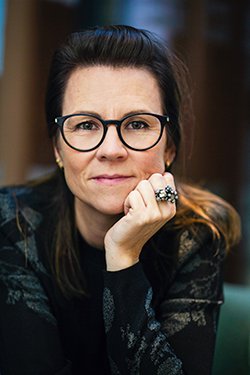
Dr. Carlén’s research aims to elucidate how the mammalian prefrontal cortex (PFC) is constructed, and how information processing in the PFC enables cognition. The Carlén lab uses systems neuroscience approaches in mice and rats to investigate prefrontal computations and their effects on downstream circuit activity in the encoding and causation of behavior relying on cognition.
Dr. Carlén graduated from Stockholm University in Sweden, with a B.Sc. in Biology. Her PhD studies were conducted 2000-05 in the laboratory of Jonas Frisén at Karolinska Institutet, Stockholm, Sweden and focused on the regenerative capacity of the mammalian brain and spinal cord. Dr. Carlén conducted postdoctoral studies 2007-2010 in the lab of Li-Huei Tsai at the Picower Institute for Learning and Memory at Massachusetts Institute for Technology, Cambridge, USA, studying the role of cortical inhibitory interneurons in oscillations and behavior. She was recruited as Assistant Professor to the Department of Neuroscience at Karolinska Institutet in 2010 and was appointed Professor of Neuronal Networks with specialty of cognitive mechanisms in 2022.
Talk: Functional maps of the mouse prefrontal cortex
The structure and function of the prefrontal cortex (PFC) across species remain unresolved. Taking advantage of the technological toolbox available to studies in rodents, our studies aim to outline the mouse PFC through integration of structural, molecular, and functional characteristics. Whole-brain tracing of connectivity and spatial transcriptomics give a novel and unbiased view of structure of the mouse PFC. The connectivity outlines the mouse PFC as a module with dense intraconnectivity, questioning independent processing in discrete prefrontal subregions. In line with this, higher cognitive functions are considered to be integrative rather than localized. Non-localized functions of the PFC can only be revealed by studies focusing on the PFC as a whole and large-scale Neuropixels recordings have opened up for massive and concurrent sampling of neuronal activities across the subregions of the prefrontal cortex. I will in my talk present our finding on how the PFC can be annotated based on neuronal activity and what the neuronal activities reveal about hierarchy and local and non-local functions in prefrontal subterritories.
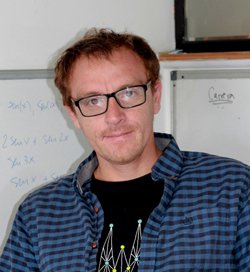 Rodrigo Cofré received a B. Phil in Aesthetics and a B.Sc. in Mathematical Engineering from the Universidad Católica de Chile. After his undergraduate studies, he continued his education at the University of Nice, where he earned a Ph.D. in Science with a focus on control, signal, and image processing. During his doctoral studies, he was supervised by Prof. Bruno Cessac, and his research focused on the development of mathematical models for studying biological systems. Following his Ph.D., he held a postdoctoral position in the Department of Theoretical Physics at the University of Geneva under the supervision of Prof. J.-P Eckmann. During this time, he worked on the development of mathematical models of nonequilibrium statistical physics applied to neurosciences. Currently, Rodrigo Cofré is a postdoctoral researcher in the group of Alain Destexhe. His research interests include computational neuroscience and the complex systems approach to studying different states of consciousness in humans and non-human primates. In this role, he is developing mathematical models to understand the mechanisms underlying different states of consciousness in humans and nonhuman primates.
Rodrigo Cofré received a B. Phil in Aesthetics and a B.Sc. in Mathematical Engineering from the Universidad Católica de Chile. After his undergraduate studies, he continued his education at the University of Nice, where he earned a Ph.D. in Science with a focus on control, signal, and image processing. During his doctoral studies, he was supervised by Prof. Bruno Cessac, and his research focused on the development of mathematical models for studying biological systems. Following his Ph.D., he held a postdoctoral position in the Department of Theoretical Physics at the University of Geneva under the supervision of Prof. J.-P Eckmann. During this time, he worked on the development of mathematical models of nonequilibrium statistical physics applied to neurosciences. Currently, Rodrigo Cofré is a postdoctoral researcher in the group of Alain Destexhe. His research interests include computational neuroscience and the complex systems approach to studying different states of consciousness in humans and non-human primates. In this role, he is developing mathematical models to understand the mechanisms underlying different states of consciousness in humans and nonhuman primates.
Talk: Dynamical aspects of the structure-function relationship modulation by anesthetics of the primate and human brains
The analysis of brain network dynamics provides an insightful perspective to analyze the dynamic reconfiguration in brain network structure across species to investigate its role during the loss of consciousness. Recent work has highlighted the importance of the dynamical aspect in understanding the functional relevance of alterations in this network structure to investigate how the brain supports consciousness. Here, we show convergent and complementary results between different methods of investigating the dynamical aspects of the structure-function relationship during the loss of consciousness. Additionally, we investigate the link between distributed structural and functional brain organization in resting-state functional MRI of non-human primates under different causal manipulations of consciousness: anesthesia, and restoration of consciousness during anesthesia induced by deep brain stimulation of the central thalamus. We report that brain activity under anesthesia is increasingly shaped according to large-scale distributed harmonic patterns determined by the organization of the macaque structural connectome. Overall, the present work extends our understanding of the link between brain network structure and distributed function in supporting consciousness and the interplay between local and global functional architecture.

Professor Stanislas Dehaene holds the Chair of Experimental Cognitive Psychology at the Collège de France in Paris. He directs the NeuroSpin center in Saclay, south of Paris -- France's advanced neuroimaging research center.
Stanislas Dehaene’s research investigates the neural mechanisms of human cognitive functions such as reading, calculation and language, with a particular interest for the differences between conscious and non-conscious processing, and for the impact of education on the brain. His main research findings include the discovery of automatic links between numbers and space, and the central role of the intraparietal sulcus in number sense; the operation of the ''visual word form area'', a left occipito-temporal region that plays a central role in learning to read; and the identification of physiological responses unique to conscious processing, supporting the theory of a ''global neuronal workspace'' for consciousness.
The awards that Prof. Dehaene has accumulated during his career are numerous; among the latest are APA Distinguished Scientific Contribution Award (2015), Thomas Reuters Highly Cited Researcher (2014), and The Grete Lundbeck Brain Prize (with G. Rizzolatti and T. Robbins) (€ 1 million) (2014).
Prof. Dehaene is a member of six academies, including the British Academy, the American Philosophical Society, the French Académie des Sciences and the National Academy of Sciences USA. On April 2016 he received his second ERC advanced grant.
Prof. Dehaene is the author of several books for the general public, including The Number Sense, Reading in the Brain, Consciousness and the Brain, and How We Learn, which were translated in more than fifteen languages. He has also created three television documentaries, and authored more than 350 scientific publications in journals such as Science, Nature, Nature Neuroscience, and PNAS. 40 of his articles were cited more than 500 times.
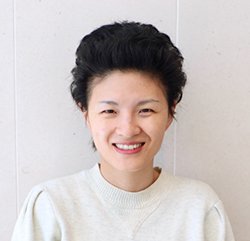
Ann Duan obtained her PhD in Neuroscience at Princeton University, where she studied prefrontal and collicular contributions to executive functions with Carlos Brody. In 2016, Ann became a Simons Collaboration on the Global Brain postdoctoral fellow in Ning-long Xu’s lab at the Institute of Neuroscience in Shanghai, where she used circuit-level tools to investigate cortico-subcortical cooperation during decision formation and maintenance. Ann joined the faculty at the Sainsbury Wellcome Centre in summer 2021. Her lab at SWC combines theory-motivated behavioural paradigms with modern experimental and analytical tools to conduct large-scale, cellular-resolution investigations of neural circuit mechanisms for flexible decision-making. In particular, she aims to understand multi-attribute decisions that reveal individuals’ underlying preferences, for example, for risky investment or competitive interaction with others.
Talk: Cortico-subcortical contributions to flexible decision-making
A central goal of behavioural neuroscience is to expose general principles of neural computation that give rise to cognition. Until recently, cognitive functions were thought to mainly rely on individual cortical areas such as the frontal cortex, while “old” subcortical areas, such as the midbrain superior colliculus (SC), have mostly been associated with sensorimotor processing. Based on these earlier work, we had expected areas such as the SC to be passively inhibited while animals avoided unwanted reflexive actions. Contrary to these predictions, we found that the SC played an active and pivotal role in suppressing context-inappropriate behaviours. Since then, my research has focused on understanding how the frontal cortex, in coordination with subcortical areas, implements flexible decision-making. We investigated these questions in two different decision-making tasks: flexible sensorimotor routing in freely-moving rats and motor planning in head-fixed mice. Using electrophysiology, optogenetics, pathway-specific two-photon calcium imaging, and computational modelling, we found that the frontal-SC circuit is particularly important during the memory period in both tasks, when the task context information or motor planning signals need to be maintained in the brain in the absence of sensory input and motor output. Our past work reveal a distributed cortico-subcortical network underlying flexible behaviours, and make surprising predictions for how decision making is implemented in the brain. If time permits, I will also talk about ongoing research programs in my lab that use the mouse model to study economic and strategic decision-making.

Martha N. Havenith co-leads the Zero-Noise Lab at the Ernst Strüngmann Institute for Neuroscience in Frankfurt. The Zero-Noise Lab’s mission is to understand cognitive processing ‘in its natural habitat’, i.e. operating in a dynamic feedback loop between sensory stimuli, ongoing computations and the resulting actions, which in turn shape sensory input. None of these components ever stand still or repeat exactly. What’s more, naturalistic cognition typically encompasses several processes (e.g. attention and learning) that co-evolve in the same neuronal populations. To capture how prefrontal and sensory cortices dynamically orchestrate such superimposed cognitive processes, the Zero-Noise lab combines chronic electrophysiology and naturalistic virtual-reality foraging with unprecedented behavioural tracking. By exactly replicating these experiments in monkeys and mice, including neuronal recordings from homologous visual and prefrontal areas, we aim to establish for the first time how prefrontal-sensory dynamics support naturalistic cognitive processing along the evolutionary ladder.
Prior to co-founding the Zero-Noise Lab, Martha has pursued the notion that neuronal and behavioural dynamics are rarely driven directly by external events, but generated and structured internally. She first tackled this topic during her PhD at the MPI for Brain Research, where she showed that recurring spike delays in V1 of anaesthetized cats reliably reflect stimulus properties. In her postdoctoral work at UCL, Martha developed cutting-edge virtual-reality paradigms to probe visually guided decision making in mice. By combining this approach with electrophysiological V1 recordings, she demonstrated that visual processing can be flexibly rerouted between cortical and subcortical processing streams – a switch that is visible only at the single-trial level. In her postdoctoral work at the Donders Institute, Martha extended this line of research, creating a VR task for mice that yields simultaneous single-trial metrics of perception, attention and rule learning. In this context, she also characterized the role of cingulate cortex in curbing excessive, but not context-appropriate, aggression in mice. Martha is one of the founders of 3Dneuro, a company that develops reusable electrophysiological implants for rodents.
Talk: A cross-species view of cingulate cortex and flexible behaviour
Over recent decades, a host of studies across paradigms, model species and recording techniques have converged on the conclusion that cingulate cortex is a hub of flexible decision making. However, when trying to pinpoint its exact functions across species, results often appear confusing and contradictory. In this talk we will discuss evidence that much of this confusion can be overcome by resolving methodological inconsistencies at two levels: (1) The anatomical definition of cingulate cortex is incongruent across species - specifically between rodents and other mammals. To address this point, we show meta-analyses taking into account anatomical, functional and genetic markers to create a data-driven delineation of cingulate areas. (2) The behavioural assessment of cognitive flexibility varies widely across and within species. To improve on this point, we present a naturalistic and visually driven foraging paradigm implemented in a highly immersive virtual reality environment, which can be performed with minimal training by rodents, monkeys and humans. The resulting behavioural read-outs can be used to simultaneously infer multiple underlying cognitive processes that are likely to be relevant to cingulate cortex function, such as error prediction, stimulus versus rule difficulty, and attentional shifts. These behavioural read-outs can help us to disentangle how ACC represents ongoing computations of multiple behaviourally relevant variables – across species.
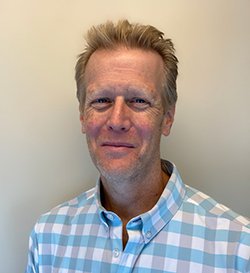
Mark Laubach is a Professor in the Department of Neuroscience at American University in Washington, DC, USA, where he runs a research lab, teaches courses to undergraduates on neurophysiology and computational neuroscience, and directs a neuroscience PhD program. His research has focused on the role of the frontal cortex in learning, decision making, and executive control and his lab hosts the OpenBehavior project, which is an NSF-funded project promoting the use of open source tools for neuroscience research.
Talk: What, if anything, is rodent prefrontal cortex and why do we keep coming back to this question?
Studies on prefrontal parts of the rodent cerebral cortex continue to appear at an increasing rate in recent years. However, there is still no consensus on the terms used to describe the rodent prefrontal cortex or how it relates to frontal regions of monkeys and humans. This is despite several publications showing common signals for cognitive processes in the medial parts of the frontal cortex of rodents and monkeys and from EEG recordings in humans. I will review some of these studies and also updates to a paper published several years ago by my lab that reported a meta-analysis of publications on the prefrontal cortex across species and issues across rodent brain atlases for how prefrontal regions are denoted. Problems persist in how rodent prefrontal cortex researchers use anatomical terms and the functional significance of findings in rodents remain a challenge for those studying other species, especially humans.
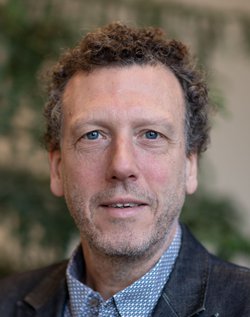 Huib Mansvelder received his PhD in Neurophysiology from the Vrije Universiteit Amsterdam in 1999. In his thesis, he investigated the control of large dense-core vesicle release by voltage-gated calcium channels in neuroendocrine cells in the pituitary. During his postdoctoral research with Dan McGehee at the University of Chicago, he studied drug-induced synaptic plasticity in dopamine neurons, and found mechanisms by which nicotinic receptors alter glutamatergic and GABAergic synaptic transmission in the VTA. During his second postdoc at Columbia University New York with Rafael Yuste, rapid calcium dynamics in dendritic spines were studied using 2photon imaging. In the summer of 2002, Huib started his own lab at VU University in Amsterdam. He became full professor in 2008 and heads the department of Integrative Neurophysiology in the CNCR since. His research focuses on how the prefrontal cortex orchestrates cognitive behaviour in rodents, in particular in interaction with subcortical brain areas, such as the basal forebrain. In addition, his lab investigates how neuronal microcircuits in the human neocortex are organized, both anatomically as well as functionally, and how properties of human neurons relate to human cognition.
Huib Mansvelder received his PhD in Neurophysiology from the Vrije Universiteit Amsterdam in 1999. In his thesis, he investigated the control of large dense-core vesicle release by voltage-gated calcium channels in neuroendocrine cells in the pituitary. During his postdoctoral research with Dan McGehee at the University of Chicago, he studied drug-induced synaptic plasticity in dopamine neurons, and found mechanisms by which nicotinic receptors alter glutamatergic and GABAergic synaptic transmission in the VTA. During his second postdoc at Columbia University New York with Rafael Yuste, rapid calcium dynamics in dendritic spines were studied using 2photon imaging. In the summer of 2002, Huib started his own lab at VU University in Amsterdam. He became full professor in 2008 and heads the department of Integrative Neurophysiology in the CNCR since. His research focuses on how the prefrontal cortex orchestrates cognitive behaviour in rodents, in particular in interaction with subcortical brain areas, such as the basal forebrain. In addition, his lab investigates how neuronal microcircuits in the human neocortex are organized, both anatomically as well as functionally, and how properties of human neurons relate to human cognition.
Talk: Cognitive control by distinct prefrontal cortical output neurons
he medial prefrontal cortex (mPFC) steers goal-directed actions and withholds inappropriate behavior. Dorsal and ventral mPFC (dmPFC/vmPFC) circuits have distinct roles in cognitive control, but underlying mechanisms are poorly understood. We use neuroanatomical tracing techniques, in vitro electrophysiology, chemogenetics and fiber photometry in rats engaged in a 5-choice serial reaction time task to characterize dmPFC and vmPFC outputs to distinct thalamic and striatal subdomains. We identify four spatially segregated projection neuron populations in the mPFC. Using fiber photometry we show that these projections distinctly encode behavior. Postsynaptic striatal and thalamic neurons differentially process synaptic inputs from dmPFC and vmPFC, highlighting mechanisms that potentially amplify distinct pathways underlying cognitive control of behavior. Chemogenetic silencing of dmPFC and vmPFC projections to lateral and medial mediodorsal thalamus subregions oppositely regulate cognitive control. In addition, dmPFC neurons projecting to striatum and thalamus divergently regulate cognitive control. Collectively, we show that mPFC output pathways targeting anatomically and functionally distinct striatal and thalamic subregions encode bi-directional command of cognitive control.
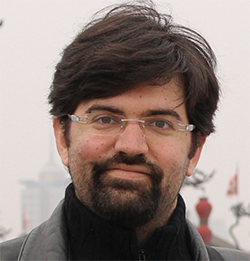 Jorge Mejias is Assistant Professor of computational neuroscience at the University of Amsterdam in the Netherlands. With a background in physics and mathematics, he obtained his PhD at the University of Granada (Spain) and held postdoctoral positions at the University of Ottawa and New York University before joining the University of Amsterdam in 2017. His research team conducts theoretical and computational research on the mechanistical principles of perception and memory, with a particular focus on modeling brain networks as multiscale systems. Jorge also serves as external faculty at the Carlos I Institute of Theoretical Physics in Spain and the European Institute for Theoretical Neuroscience in Paris.
Jorge Mejias is Assistant Professor of computational neuroscience at the University of Amsterdam in the Netherlands. With a background in physics and mathematics, he obtained his PhD at the University of Granada (Spain) and held postdoctoral positions at the University of Ottawa and New York University before joining the University of Amsterdam in 2017. His research team conducts theoretical and computational research on the mechanistical principles of perception and memory, with a particular focus on modeling brain networks as multiscale systems. Jorge also serves as external faculty at the Carlos I Institute of Theoretical Physics in Spain and the European Institute for Theoretical Neuroscience in Paris.
Talk: Dorsolateral prefrontal cortex and beyond: distributed working memory across neocortical networks
Working memory denotes our capacity to retain and manipulate information for short amounts of time, a cognitive function crucial for survival. While neural activity at the dorsolateral prefrontal cortex has been traditionally associated with this function, recent evidence in monkeys and humans suggests that other brain areas might have a substantial role in it. To understand the neurobiological mechanisms behind such distributed activity, I will present and discuss recent results on computational models of distributed working memory in primates. The models are constrained with anatomical data from neocortical networks, and predict the emergence of patterns of activity distributed across several cortical lobes and strongly correlated with the information content to be retained in working memory tasks. Our results reveal a privileged position of dorsolateral prefrontal cortex in such distributed representations (for example, in terms of robustness to lesions or inactivations), but they also shift the weight of working memory maintenance from a classical, 'local' attractor model centered in prefrontal cortex to a more global, cooperative effort between multiple brain areas.
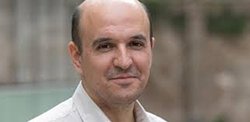 In 2010, he obtained a Ramon y Cajal Award and become a scientific independent leader at the Foundation Sant Joan de Deu in 2011 as the head of the Theoretical and Cognitive Neuroscience group. Recently, in 2015, Moreno Bote has become a Serra Hunter Professor (associate level, permanent) at the Center for Brain and Cognition (CBC) and the Dept. of Communication and Information Technologies in the University Pompeu Fabra in Barcelona, and he was an ICREA Academia Professor (2017-2021). During the last 10 years, the laboratory of Moreno-Bote has published in the two top journals of brain sciences, namely, Nature Neuroscience (2014) and Neuron (2016), and also in other top journals such as Nature Communications (2017, 2019, 2021), PNAS (2020) and Current Biology (2021), in the areas of decision-making and information in large neuronal populations.
In 2010, he obtained a Ramon y Cajal Award and become a scientific independent leader at the Foundation Sant Joan de Deu in 2011 as the head of the Theoretical and Cognitive Neuroscience group. Recently, in 2015, Moreno Bote has become a Serra Hunter Professor (associate level, permanent) at the Center for Brain and Cognition (CBC) and the Dept. of Communication and Information Technologies in the University Pompeu Fabra in Barcelona, and he was an ICREA Academia Professor (2017-2021). During the last 10 years, the laboratory of Moreno-Bote has published in the two top journals of brain sciences, namely, Nature Neuroscience (2014) and Neuron (2016), and also in other top journals such as Nature Communications (2017, 2019, 2021), PNAS (2020) and Current Biology (2021), in the areas of decision-making and information in large neuronal populations.
Talk: Recalling what was there: Looking back at the location of previously shown offers modulates the encoding of offer value in orbitofrontal cortex
Whenever facing visual-guided choices among multiple options, we tend not to consider all available options at the same time. Instead, options are sequentially inspected and eventually alternated until commitment to any of them is reached. While the encoding of economic value and choice has been studied in frontal brain regions, the link between fixations to options and the neural processes for value encoding is just recently emerging. Here we examine simultaneous behavioral and neural activity of macaque monkeys performing a binary choice task in which risky offers were presented in sequence, each followed by a blank screen delay period. As expected, subjects allocate their gaze towards offer presentation locations and spend more time looking at most valuable offers. Surprisingly, we found the same pattern at delay times before choice execution when the screen was blank, i.e., subjects spend more time fixating the locations where valuable offers are presented; and the longer they look at the empty locations, the larger the probability of choosing the previously presented offer. Further, we found that neural encoding of the offers’ expected values in orbitofrontal cortex (OFC) is modulated by eye position, even when the screen is blank. Specifically, when gaze is directed to a given offer location or to the empty region where it was previously located, its value is more strongly encoded in OFC, while the encoding of the alternative offer value is suppressed. Our results provide evidence that eye position reflects and internal deliberation process that modulates the encoding of recalled content, providing a new window to study the hidden dynamics of decision making.
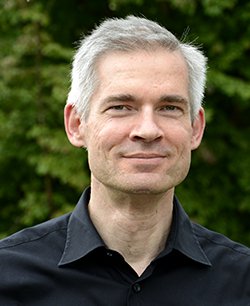
Andreas Nieder is professor of Animal Physiology at the Dept. of Biology at the University of Tübingen (Germany), where he is also director of the Institute of Neurobiology. He is author of the book “A Brain for Numbers – the Biology of the Number Instinct” (MIT Press, 2019).
Andreas Nieder studied Biology at the Technical University Munich (Germany), and received a Ph.D. in biology/neuroscience form the University Aachen (Germany) with Dr Hermann Wagner. He was a postdoctoral fellow with Dr Earl K Miller at the Massachusetts Institute of Technology (Cambridge, Massachusetts, USA) before leading an independent junior research group at the Hertie-Institute for Clinical Brain Research/Dept. Cognitive Neurology at the University Hospital Tübingen.
Andreas Nieder is interested in how higher brain centers enable intelligent, goal-directed behaviours. To that aim, his laboratory explores the functioning of highly intelligent primate and corvid brains that evolved independently through convergent evolution.
Talk: Dopamine and cellular mechanisms of cognitive control in primate prefrontal cortex
Cognitive control functions of the prefrontal cortex (PFC) are heavily influenced by the neuromodulator dopamine. We studied cellular mechanisms of how dopamine modulates PFC functions in monkeys engaged in cognitively demanding tasks. We probed single neurons by using a combination of single-neuron recordings and simultaneous micro-iontophoretic drug applications in the direct vicinity of recorded neurons. The modulations in neuronal coding after pharmacologically activating or blocking the two major (D1- and D2-) receptor families in PFC neurons suggests major computational roles of dopamine in cognitive control; dopamine supports the gating of sensory input to PFC, but also the maintenance and manipulation of working memory contents in PFC networks. Using computational modeling of a biophysically plausible prefrontal network, neuronal micro-circuits based on known mechanisms of action of dopamine in PFC are suggested. This combination of electrophysiological, pharmacological, and computational approaches helps to decipher neuronal mechanisms of dopaminergic modulation in prefrontal executive functioning.
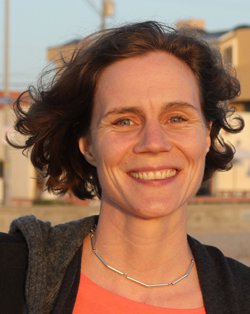 Hendrikje Nienborg is an investigator at the National Eye Institute, National Institutes of Health, USA, where she leads the Section on Visual Decision Making. She received her medical and doctoral degrees from the Ludwig-Maximilians University in Munich, Germany, and a Master in Neuroscience from the University of Oxford, UK. She conducted postdoctoral work at the National Eye Institute and at the Salk Institute for Biological Studies in La Jolla, CA, before heading her own research group first at the University of Tuebingen, Germany, and since 2019 at the National Eye Institute. Her research has received funding from the NEI (K99/R00 award), the Kavli foundation, the ERC and the German Research Foundation (DFG). Her lab uses computational, behavioral, pharmacological, functional imaging, large-scale electrophysiological, and, through collaboration, machine learning approaches to address the following questions: 1) how are cognitive and sensory signals integrated in the visual cortex? 2) how do non-visual context, such as motivation, behavioral state or learning, and the involved neuromodulatory circuits influence the encoding of the incoming visual signals? 3) how are these combined signals used to guide behavior in healthy mammalian brains? Answering these questions is aimed at improving our understanding of how these mechanisms fail in psychiatric and neurological diseases.
Hendrikje Nienborg is an investigator at the National Eye Institute, National Institutes of Health, USA, where she leads the Section on Visual Decision Making. She received her medical and doctoral degrees from the Ludwig-Maximilians University in Munich, Germany, and a Master in Neuroscience from the University of Oxford, UK. She conducted postdoctoral work at the National Eye Institute and at the Salk Institute for Biological Studies in La Jolla, CA, before heading her own research group first at the University of Tuebingen, Germany, and since 2019 at the National Eye Institute. Her research has received funding from the NEI (K99/R00 award), the Kavli foundation, the ERC and the German Research Foundation (DFG). Her lab uses computational, behavioral, pharmacological, functional imaging, large-scale electrophysiological, and, through collaboration, machine learning approaches to address the following questions: 1) how are cognitive and sensory signals integrated in the visual cortex? 2) how do non-visual context, such as motivation, behavioral state or learning, and the involved neuromodulatory circuits influence the encoding of the incoming visual signals? 3) how are these combined signals used to guide behavior in healthy mammalian brains? Answering these questions is aimed at improving our understanding of how these mechanisms fail in psychiatric and neurological diseases.
Talk: Do spontaneous body movements drive brain-wide neural activity? A cross-species comparison
Neuroscience seeks to understand natural behavior: animals interacting with their environment by actively sensing the environment while moving their bodies. Recent studies in mice showed that task-unrelated spontaneous body movements are associated with brain-wide neuromodulation, including in prefrontal areas but also in primary sensory areas, such as the visual cortex. In my talk, I will examine to which degree these observations hold in primates by reviewing recent work from prefrontal cortex as well as our own work from the visual cortex. We combined neurophysiological population recordings and videography to monitor the animals’ movements. The monkey’s own spontaneous movements were associated with neural activity in the visual cortex, seemingly consistent with the findings in mice. We then used an encoding model to examine this modulation further. It showed that activity related to movements resulted from a change of the retinal image brought about by these spontaneous movements. Thus, when controlling the retinal input, the monkey’s spontaneous movements did not influence activity in the visual cortex. Moreover, using a model-free approach we found that the modulation by a cognitive state (spatial attention) far exceeded, and was not associated with modulation by movements. Together, the results reveal cross-species parallels and discrepancies. In the primate visual cortex, spontaneous movements do not drive neural activity. The primate visual system may have thus evolved to optimize visual processing by separating sensory information from non-sensory modulations due to the animal’s own spontaneous body movements.
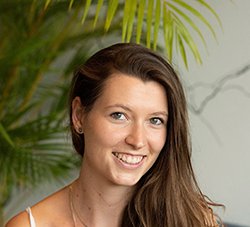 Sandra Reinert is currently working as a postdoctoral researcher with Tobias Bonhoeffer and Mark Hübener at the Max Planck Institute for Biological Intelligence in Munich. During her PhD in the same laboratory, she characterized neuronal activity in medial prefrontal cortex of mice performing rule-based categorization. Sandra Reinert studied Biology and Neuroscience at the Ludwig-Maximilians-University and the Graduate School for Systemic Neurosciences in Munich.
Sandra Reinert is currently working as a postdoctoral researcher with Tobias Bonhoeffer and Mark Hübener at the Max Planck Institute for Biological Intelligence in Munich. During her PhD in the same laboratory, she characterized neuronal activity in medial prefrontal cortex of mice performing rule-based categorization. Sandra Reinert studied Biology and Neuroscience at the Ludwig-Maximilians-University and the Graduate School for Systemic Neurosciences in Munich.
Talk: Neural representations of learned rules for categorization in mouse prefrontal cortex
Grouping objects and experiences into categories is a fundamental skill for humans and many animals. Learning and recalling rules for categorization enables us to flexibly adapt to changes in context. How the brain forms and represents such rules is not fully understood. We trained mice to group visual stimuli into categories according to two rules and found that mice can learn to categorize, generalize to novel stimuli and remap stimuli upon a switch in rules. In mouse medial prefrontal cortex (mPFC), we found that a set of neurons acquired category-selective responses with learning. After the rule-switch, category-selective neurons partly remapped and previously non-selective neurons became responsive to the new categories. Thus, we could demonstrate that mouse mPFC forms representations of learned categories and flexibly encodes changes in rules. By optogenetically manipulating neuronal activity in-task, we are now testing for a causal role of mPFC in different aspects of categorization behavior.
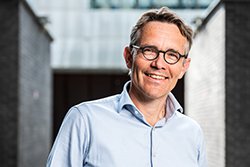
Pieter R. Roelfsema received his MD degree in 1991 and his PhD degree in 1995. He moved to the Netherlands Institute for Neuroscience in Amsterdam in 2002 and became director in 2007. He is professor at the Free University of Amsterdam and at the AUMC in Amsterdam. He received a NWO-VICI award (2008) and two ERC-Advanced grants (2014 and 2022). Roelfsema studies visual perception, plasticity, memory and consciousness in the visual system of experimental animals, humans, and with neural networks. His main question is how neurons in different brain areas work together during seeing and thinking. Roelfsema studies how networks of neurons work together to perceive and solve cognitive tasks and how they configure themselves during learning. He develops the neurotechnology for high-bandwidth visual prostheses for blind people, aiming to restore a rudimentary form of sight. Roelfsema coordinates the Dutch neurotechnology initiative NeuroTech-NL.
Talk: Interactions between cortical neurons that give rise to conscious perception
Why are some visual stimuli consciously perceived, whereas others remain subliminal? I will discuss how weak but simple stimuli reach access consciousness once they elicit a minimal level of activity in the frontal cortex, leading to their storage in working memory. For simple stimuli, the visual cortex apparently acts as a relay station that needs to pass the information to the frontal cortex but is not essential for report. However, we found that the perception of more complex visual stimuli relies on a more sustained interaction between visual cortex and associative brain regions, related to scene segmentation and visual attention. The implication is that the processes subserving conscious perception depend on the complexity of perceptual processing. These results pave the way for a genuine understanding of mechanisms for phenomenal and access consciousness in perception.
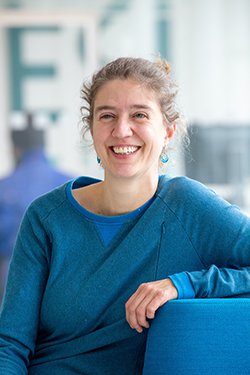 Marieke Schölvinck co-leads the Zero-Noise Lab at the Ernst Strüngmann Institute for Neuroscience in Frankfurt. The Zero-Noise Lab’s mission is to understand cognitive processing ‘in its natural habitat’, i.e. operating in a dynamic feedback loop between sensory stimuli, ongoing computations and the resulting actions, which in turn shape sensory input. None of these components ever stand still or repeat exactly. What’s more, naturalistic cognition typically encompasses several processes (e.g. attention and learning) that co-evolve in the same neuronal populations. To capture how prefrontal and sensory cortices dynamically orchestrate such superimposed cognitive processes, the Zero-Noise lab combines chronic electrophysiology and naturalistic virtual-reality foraging with unprecedented behavioural tracking. By exactly replicating these experiments in monkeys and mice, including neuronal recordings from homologous visual and prefrontal areas, we aim to establish for the first time how prefrontal-sensory dynamics support naturalistic cognitive processing along the evolutionary ladder.
Marieke Schölvinck co-leads the Zero-Noise Lab at the Ernst Strüngmann Institute for Neuroscience in Frankfurt. The Zero-Noise Lab’s mission is to understand cognitive processing ‘in its natural habitat’, i.e. operating in a dynamic feedback loop between sensory stimuli, ongoing computations and the resulting actions, which in turn shape sensory input. None of these components ever stand still or repeat exactly. What’s more, naturalistic cognition typically encompasses several processes (e.g. attention and learning) that co-evolve in the same neuronal populations. To capture how prefrontal and sensory cortices dynamically orchestrate such superimposed cognitive processes, the Zero-Noise lab combines chronic electrophysiology and naturalistic virtual-reality foraging with unprecedented behavioural tracking. By exactly replicating these experiments in monkeys and mice, including neuronal recordings from homologous visual and prefrontal areas, we aim to establish for the first time how prefrontal-sensory dynamics support naturalistic cognitive processing along the evolutionary ladder.
Prior to co-founding the Zero-Noise Lab, Marieke’s career has explored the structure and behavioural impact of spontaneous neuronal dynamics, which are often discarded as ‘neuronal noise’. She has tackled this topic using a wide variety of techniques, ranging from fMRI in humans and primates, and in vivo electrophysiology in rodents, cats, and primates, to computational modelling. During her doctoral and postdoctoral research at UCL and NIH, Marieke demonstrated that spontaneous ‘variability’ in local neural activity is directly linked to systematic fluctuations of the surrounding neuronal network, including spiking activity of local microcircuits and whole-brain fluctuations of resting-state activity, as captured by fMRI. In her senior postdoctoral research at the Ernst-Strüngmann Institute for Neuroscience, Marieke obtained parallel recordings of V1, V4 and MT in macaques to explore the behavioural impact of spontaneous fluctuations in cross-area communication, showing that they accurately predict trial-by-trial performance in a visual attention task.
Talk: A cross-species view of cingulate cortex and flexible behaviour
Over recent decades, a host of studies across paradigms, model species and recording techniques have converged on the conclusion that cingulate cortex is a hub of flexible decision making. However, when trying to pinpoint its exact functions across species, results often appear confusing and contradictory. In this talk we will discuss evidence that much of this confusion can be overcome by resolving methodological inconsistencies at two levels: (1) The anatomical definition of cingulate cortex is incongruent across species - specifically between rodents and other mammals. To address this point, we show meta-analyses taking into account anatomical, functional and genetic markers to create a data-driven delineation of cingulate areas. (2) The behavioural assessment of cognitive flexibility varies widely across and within species. To improve on this point, we present a naturalistic and visually driven foraging paradigm implemented in a highly immersive virtual reality environment, which can be performed with minimal training by rodents, monkeys and humans. The resulting behavioural read-outs can be used to simultaneously infer multiple underlying cognitive processes that are likely to be relevant to cingulate cortex function, such as error prediction, stimulus versus rule difficulty, and attentional shifts. These behavioural read-outs can help us to disentangle how ACC represents ongoing computations of multiple behaviourally relevant variables – across species.

Xiao-Jing Wang is Distinguished Global Professor of Neural Science, director of the Swartz Center for Theoretical Neuroscience at New York University. Between 2012 and 2017 he served as the founding provost and vice president for research at the Shanghai campus of NYU. Previously he was Professor at Yale University School of Medicine. Dr. Wang’s research focuses on theory and neural mechanisms of cognitive functions such as working memory, decision-making and executive control of flexible behavior, with a special interest in the prefrontal cortex (dubbed “Brain’s CEO”). His research and efforts contributed to the founding of the nascent field of Computational Psychiatry. More recently, his group developed theory and connectome-based modeling of large-scale multi-regional brain circuits to investigate whole brain dynamics and distributed cognition. Dr. Wang is a recipient of Alfred P. Sloan Research Fellowship, Guggenheim Fellowship, Swartz Prize for Theoretical and Computational Neuroscience Prize, Goldman-Rakic Prize for Outstanding Achievement in Cognitive Neuroscience. He was elected to the Royal Academy of Belgium.

Charlie Wilson is a tenured research scientist at the Stem Cell and Brain Research Institute, a unit of INSERM, France’s medical research Institute. His work focusses on the neuroscience of learning processes that are dependent on the prefrontal cortex, and the neurophysiological mechanisms of those processes, principally using macaque monkeys with chronic neurophysiological recordings and lesions. His current focus is on the neurophysiological basis of the process of learning to learn, also known as learning set or meta learning, which has previously been shown (by himself and others) to be dependent on the granular prefrontal cortex that is specific to primate species.
Scientific Chairs & Local hosts
Contact
Co-organised by
In Collaboration with
Venue
Timo van Kerkoerle | NeuroSpin, CEA Saclay, France
Ruth Benavides-Piccione | Cajal Institute, CSIC & Universidad Politécnica de Madrid, Spain
Alain Destexhe | NeuroPsi, CNRS, EITN, France
workshop.edu@humanbrainproject.eu

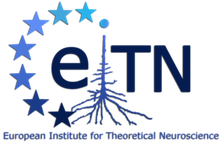


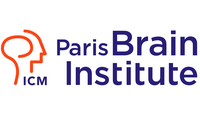


14–15 March (plenary lectures & discussions):
ICM Institute for Brain and Spinal Cord
47, bd de l'hôpital
75013 Paris - France
16 March (hands-on session day):
Paris Saclay Institute of Neuroscience (NeuroPSI)
Campus CEA Saclay, Bldg 151
151 route de la Rotonde
91400 Saclay, FRANCE

